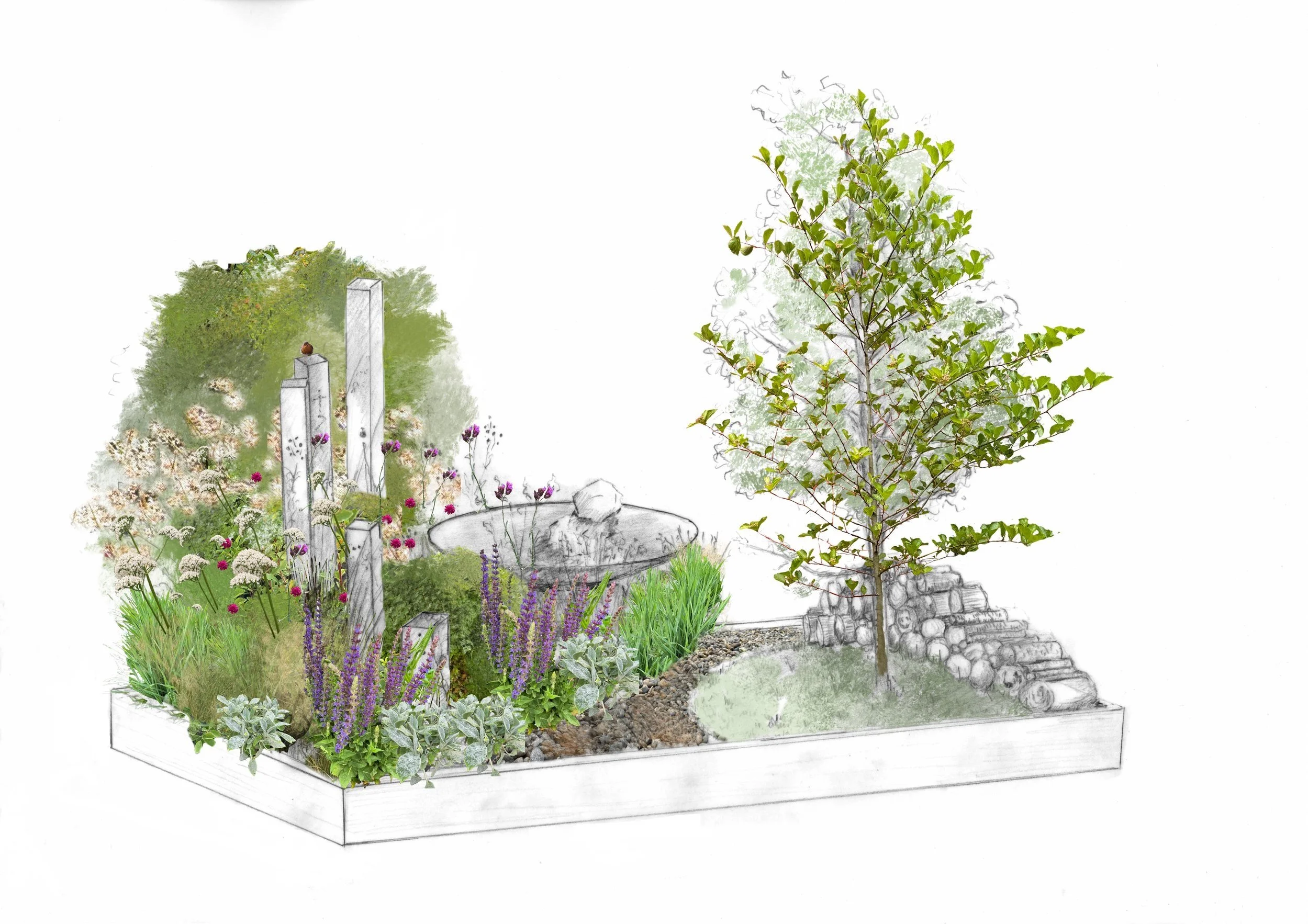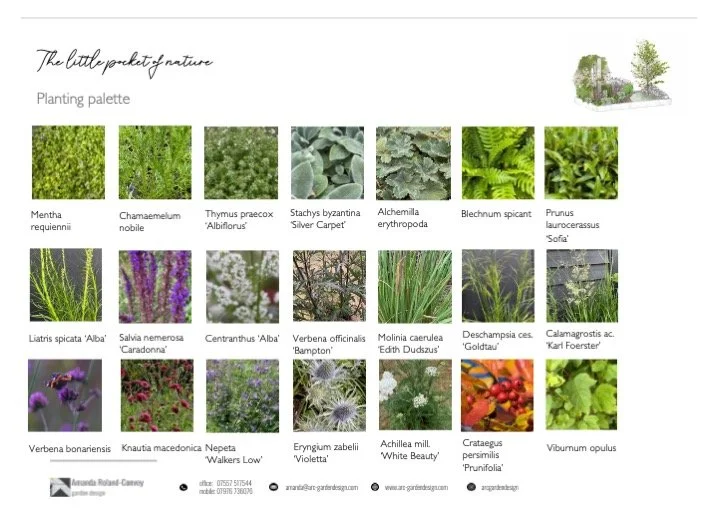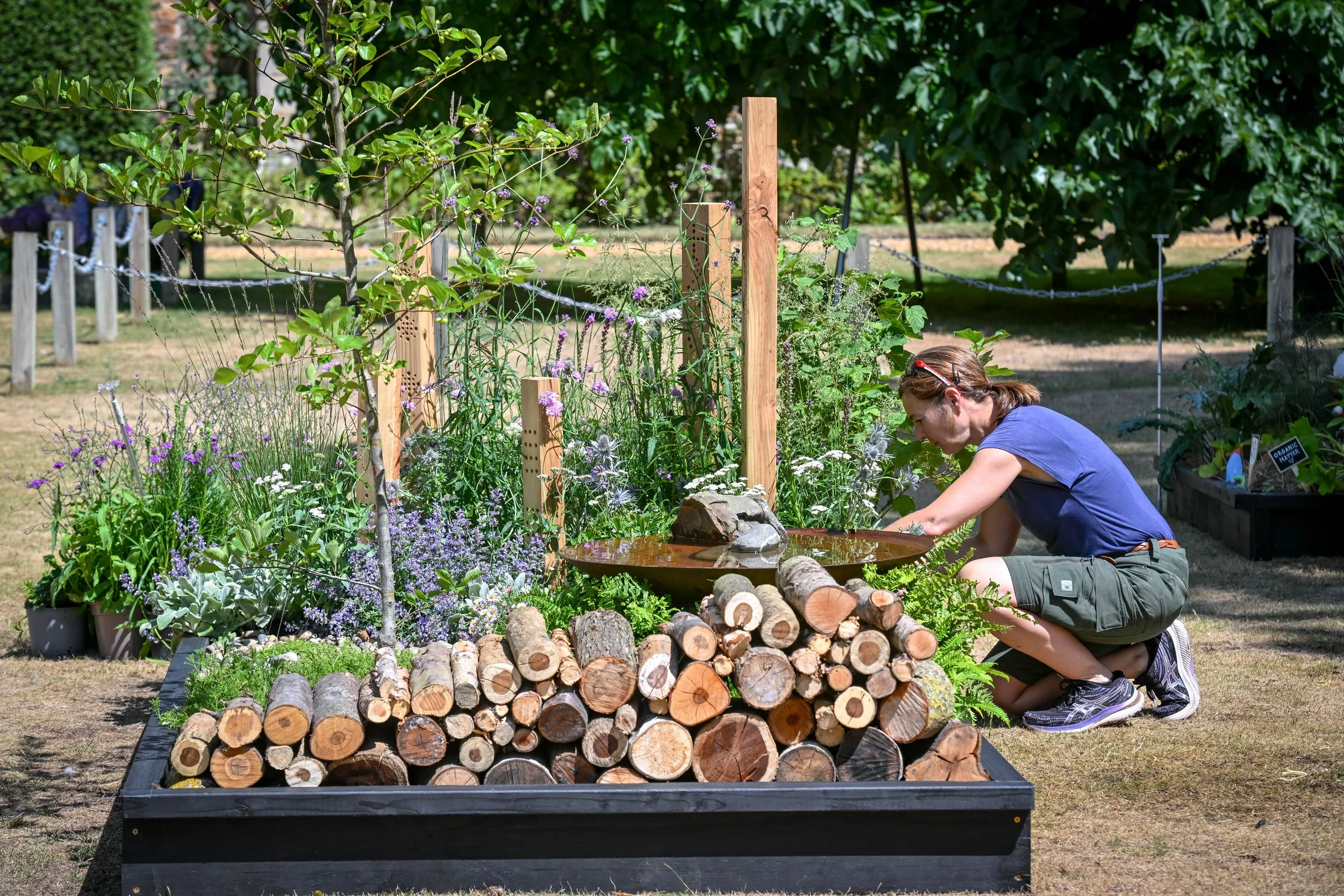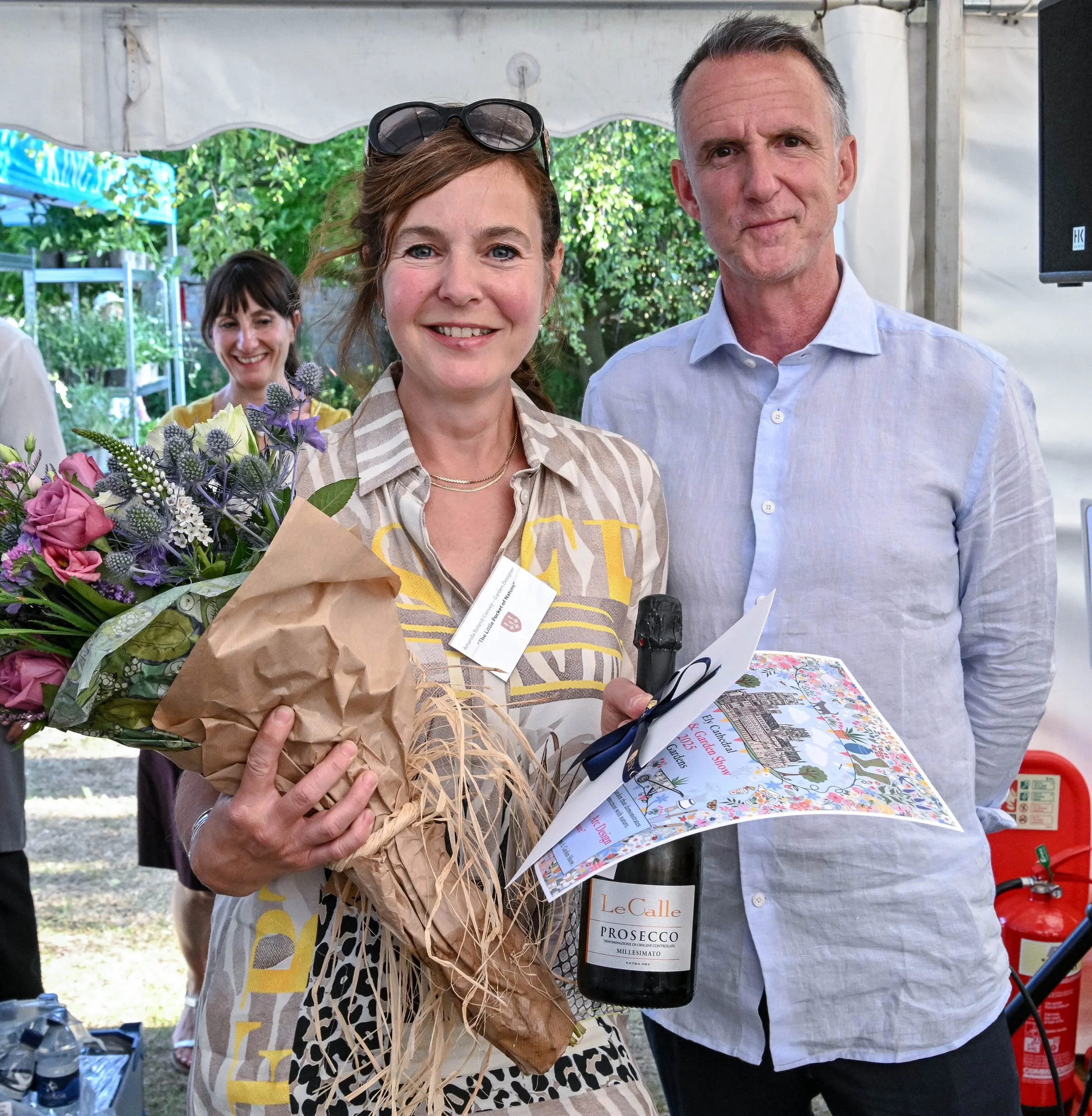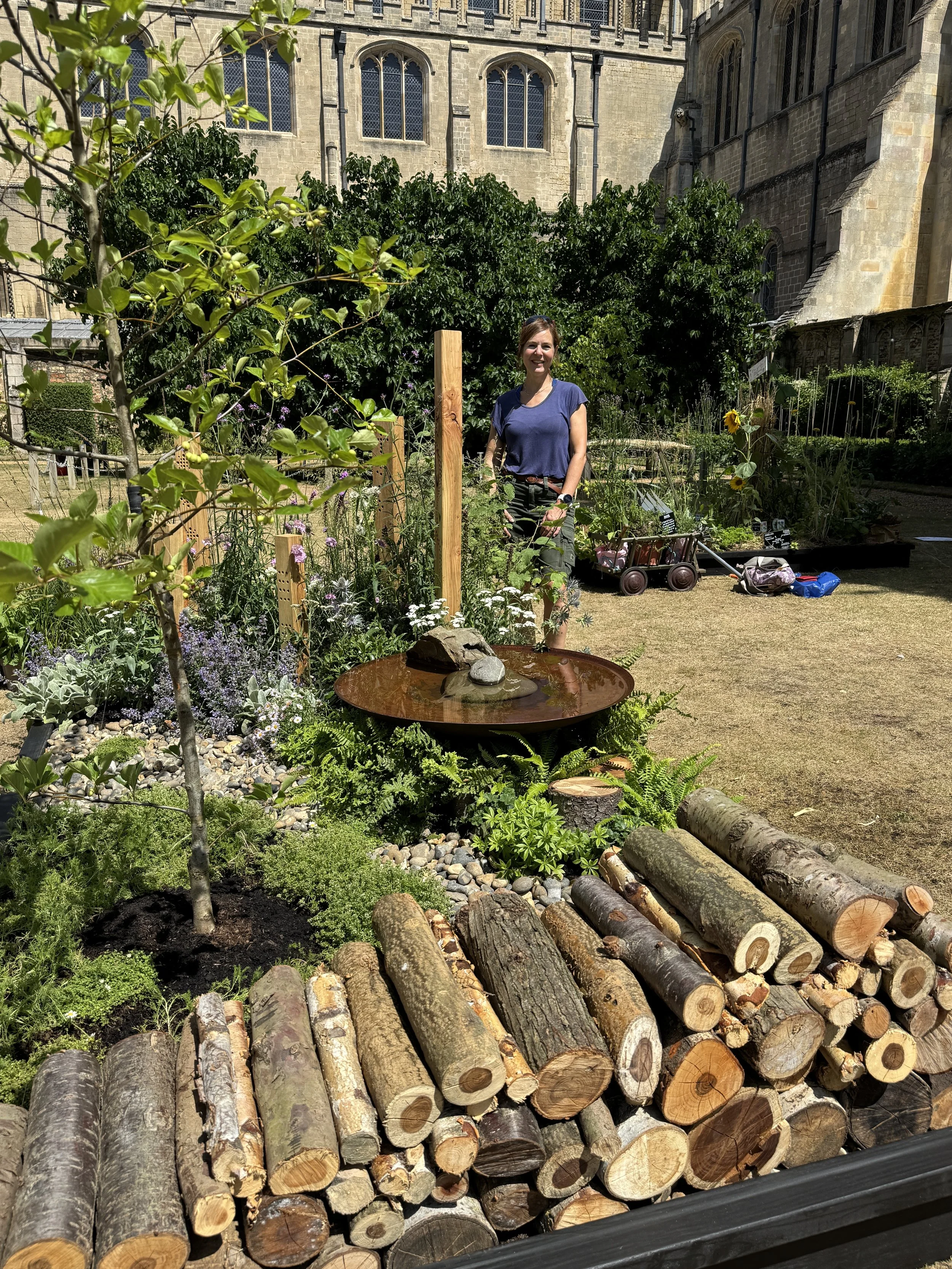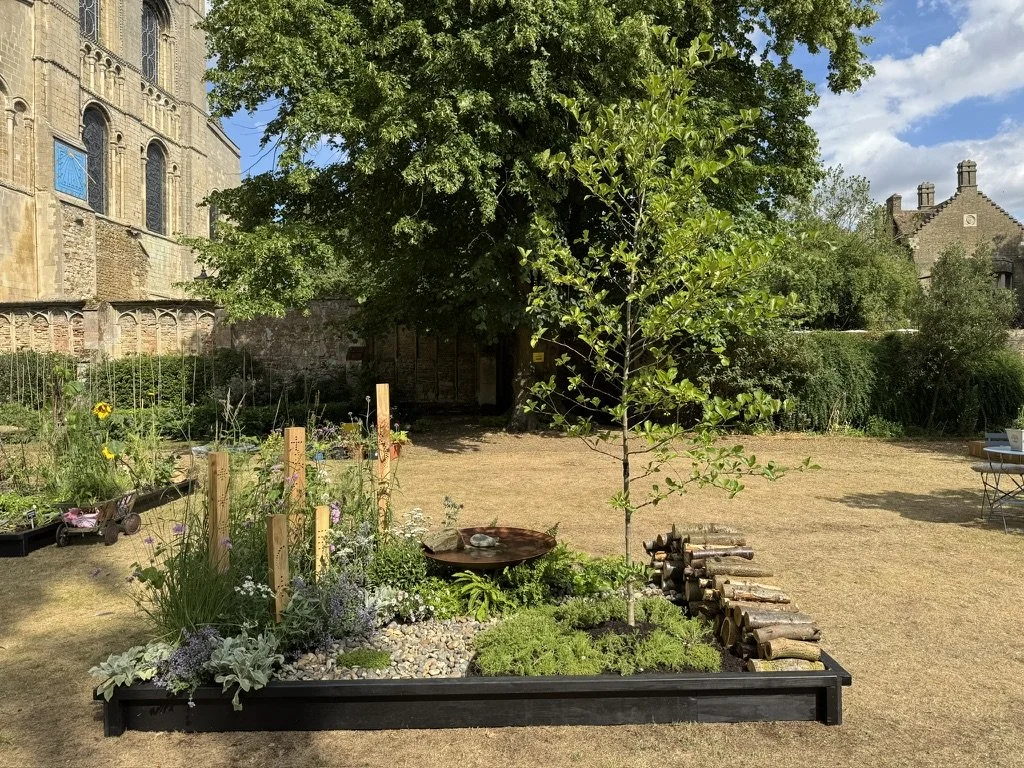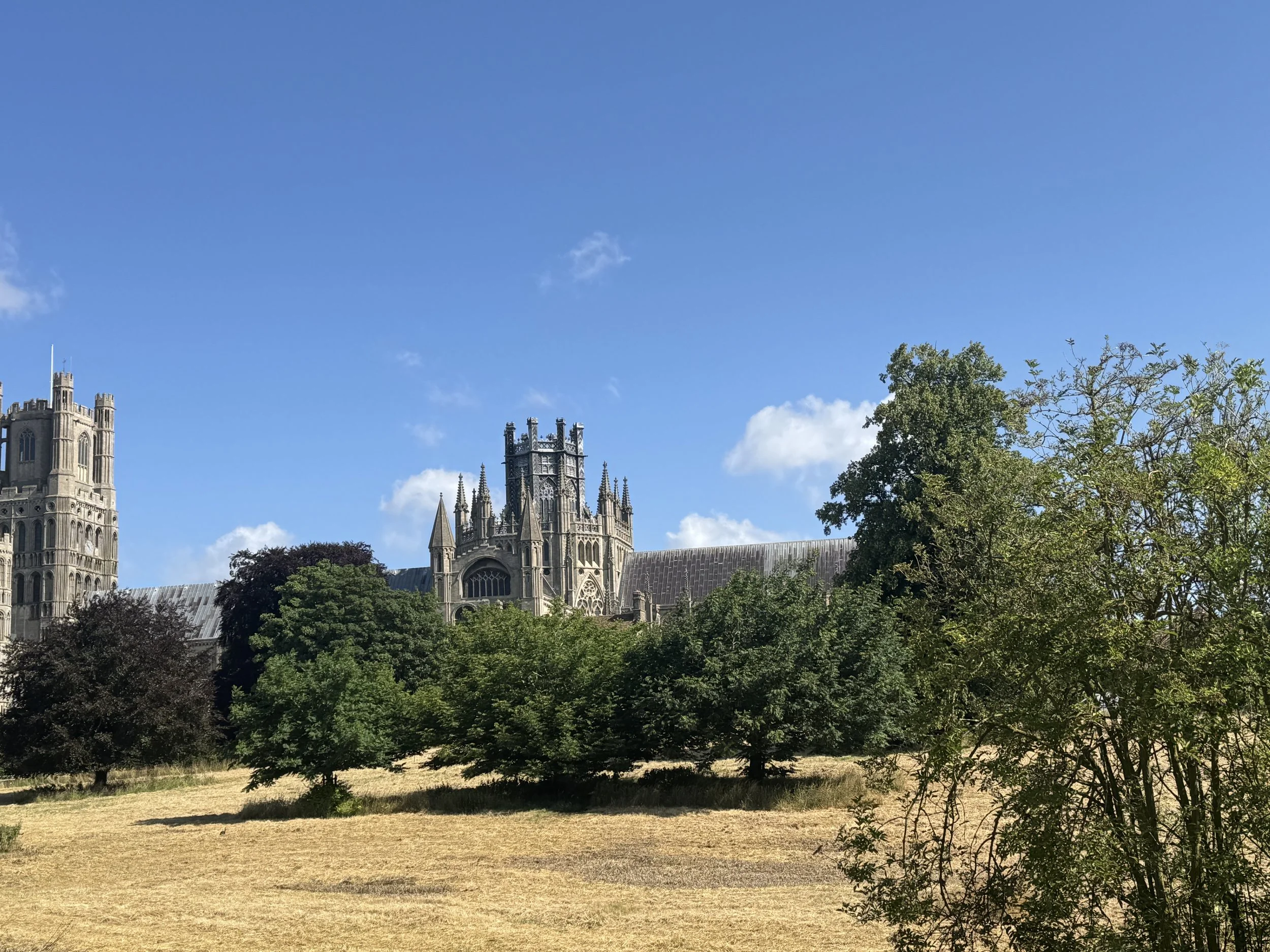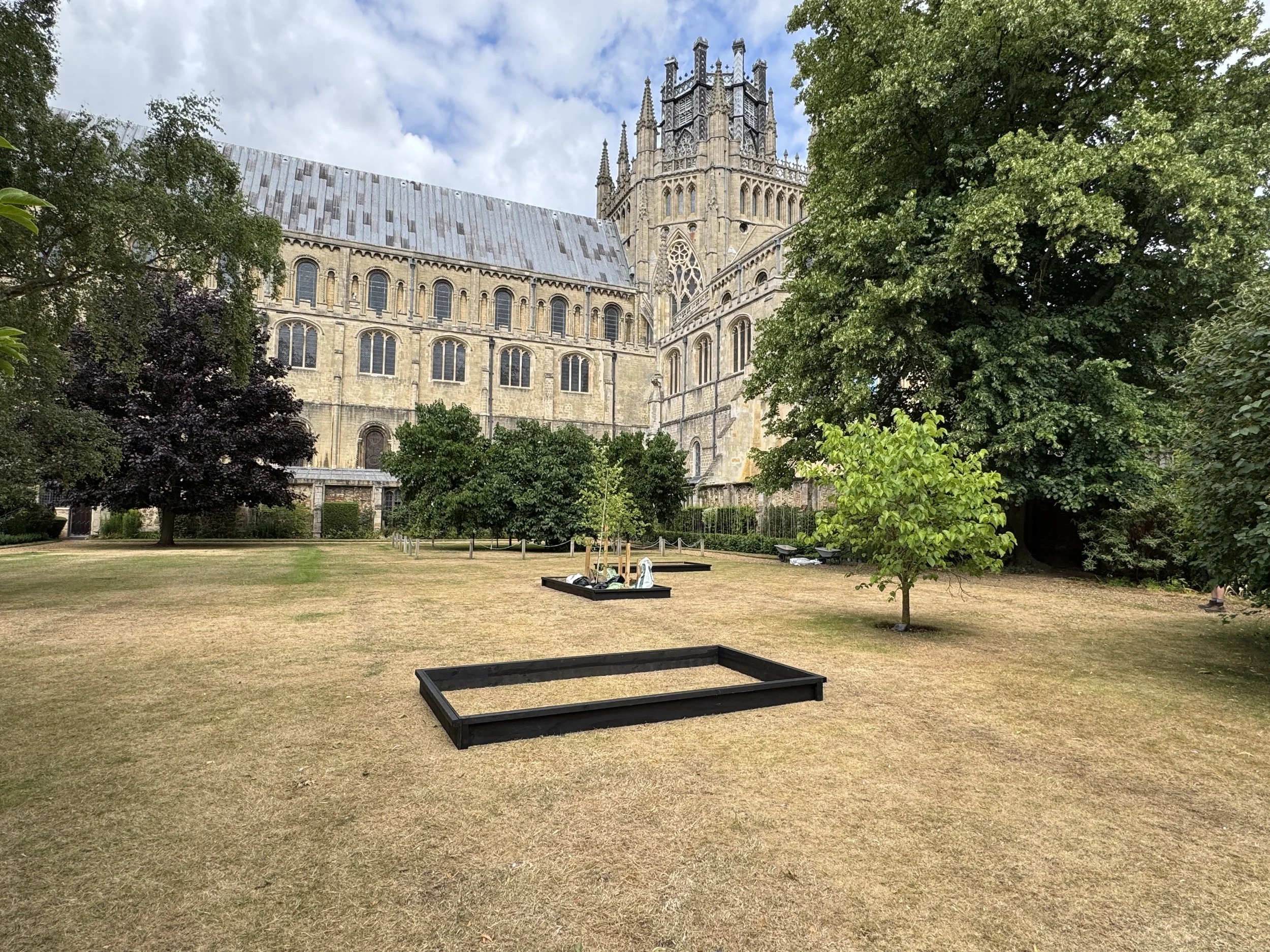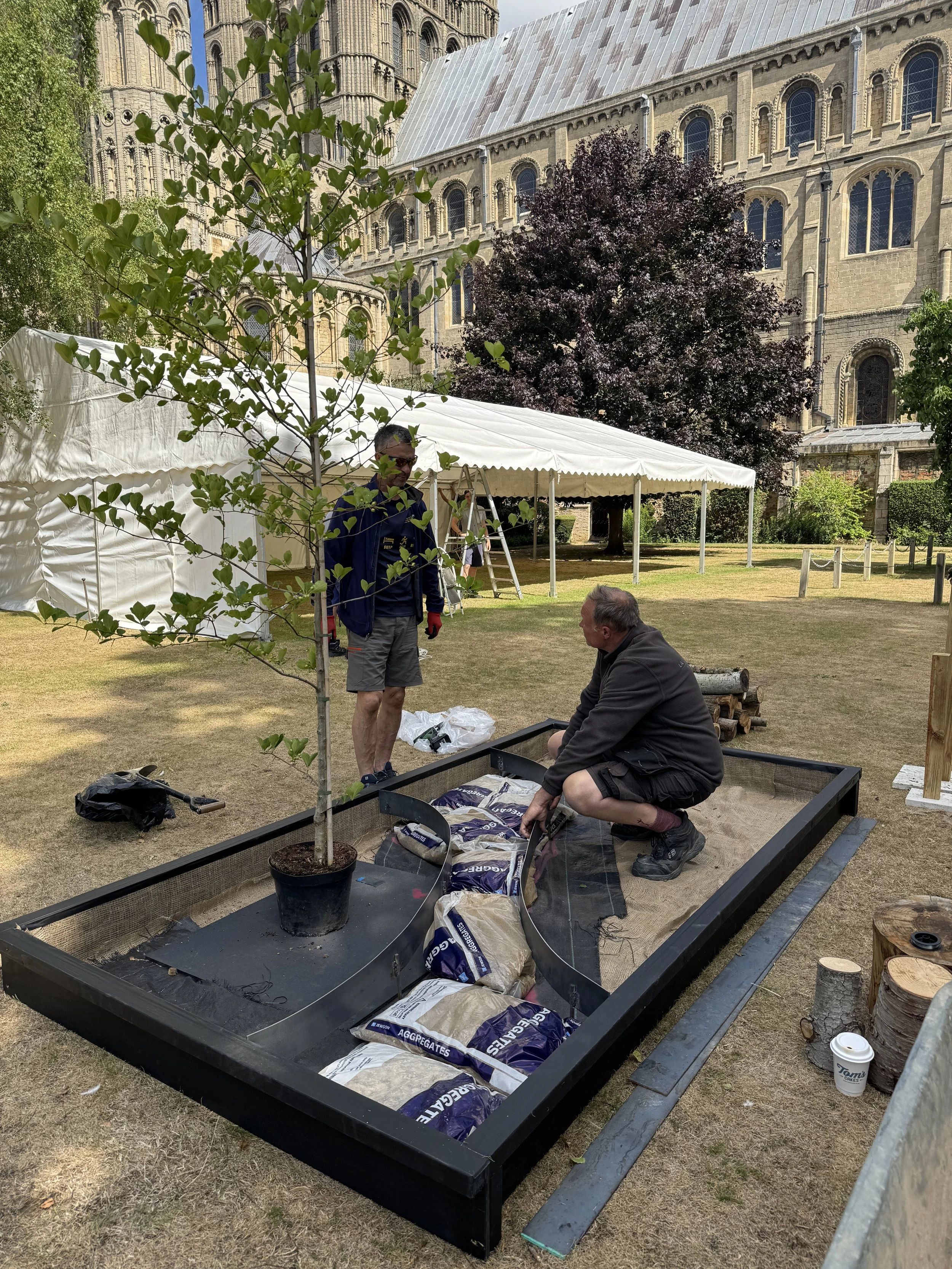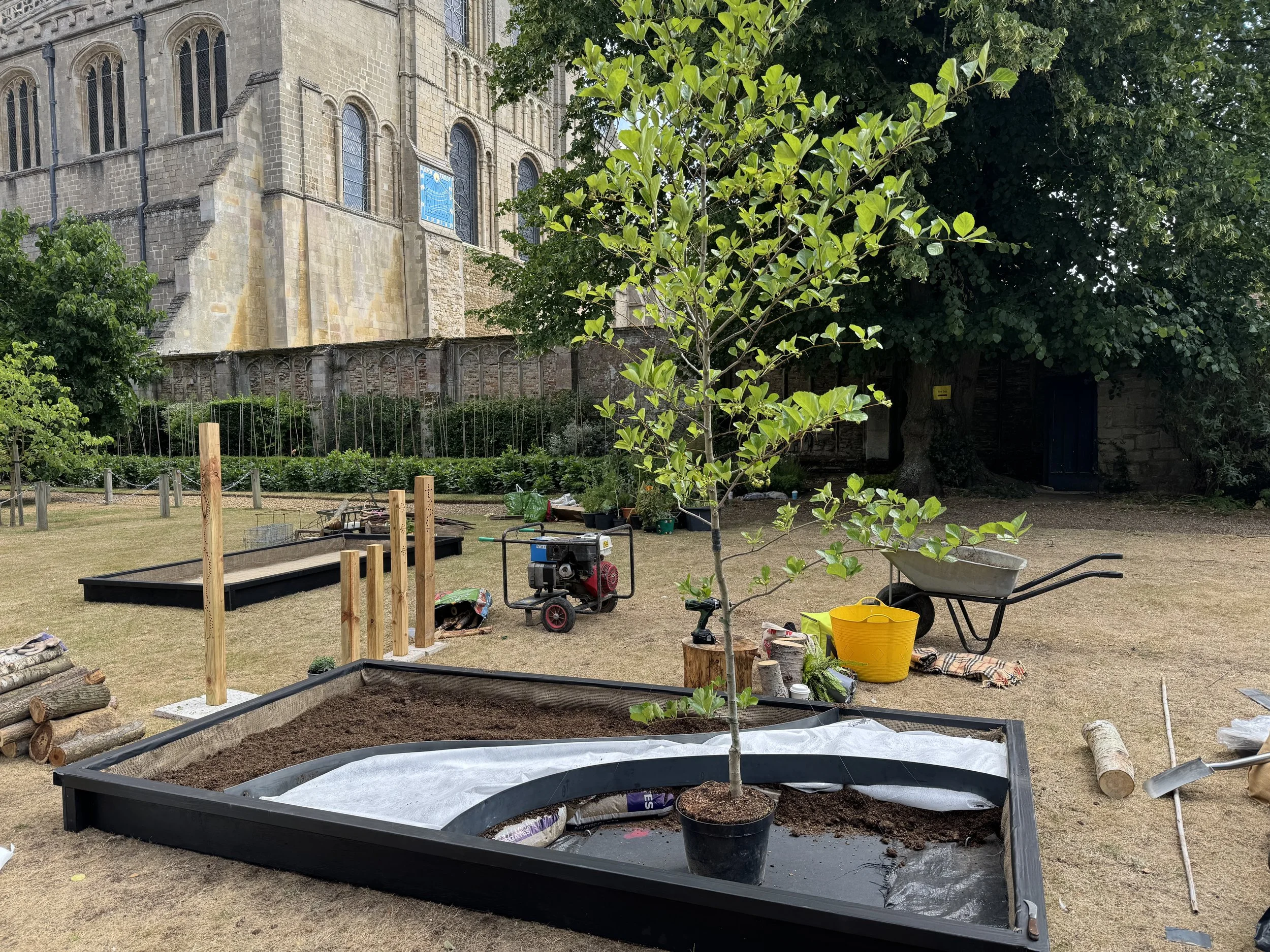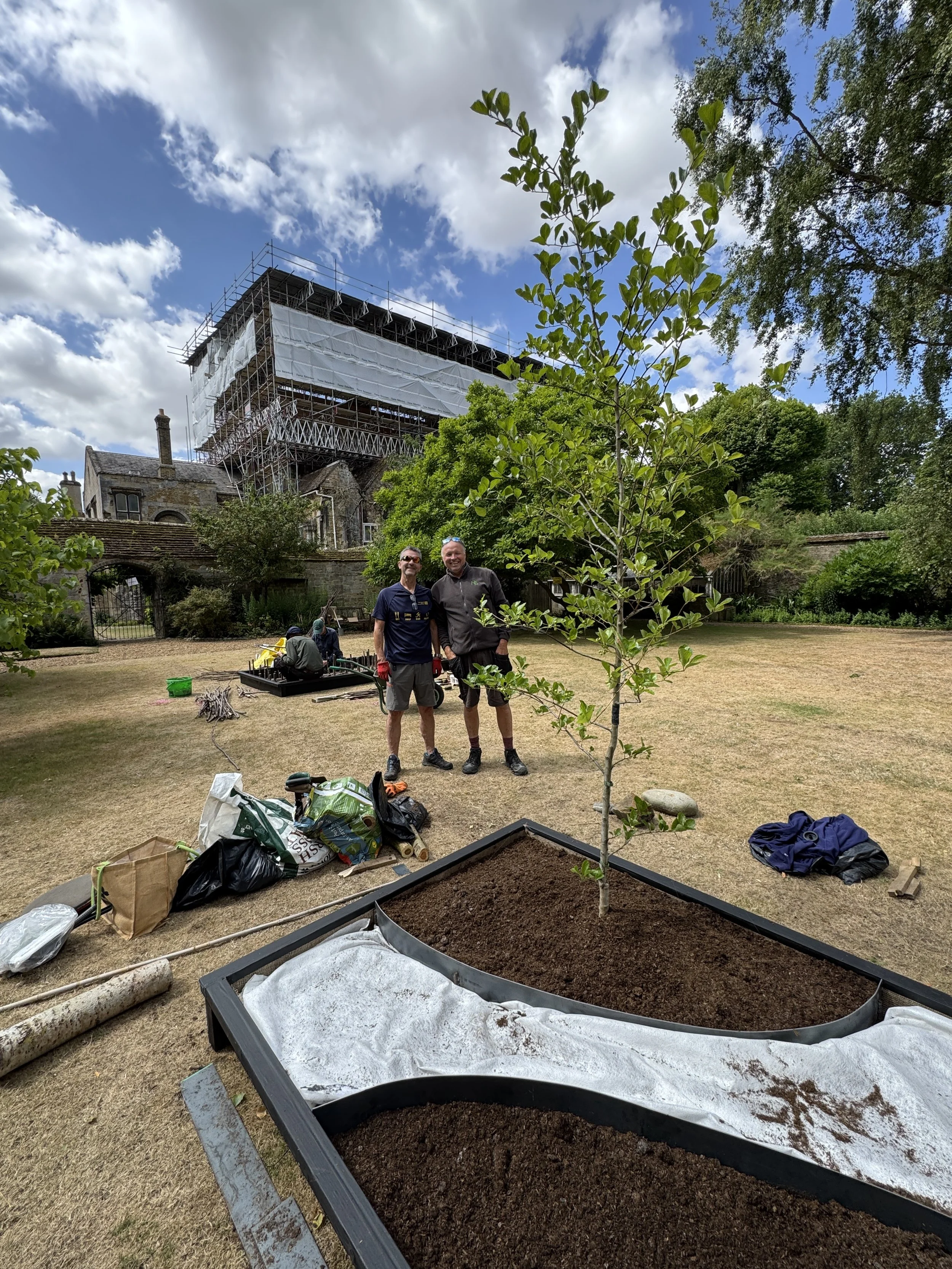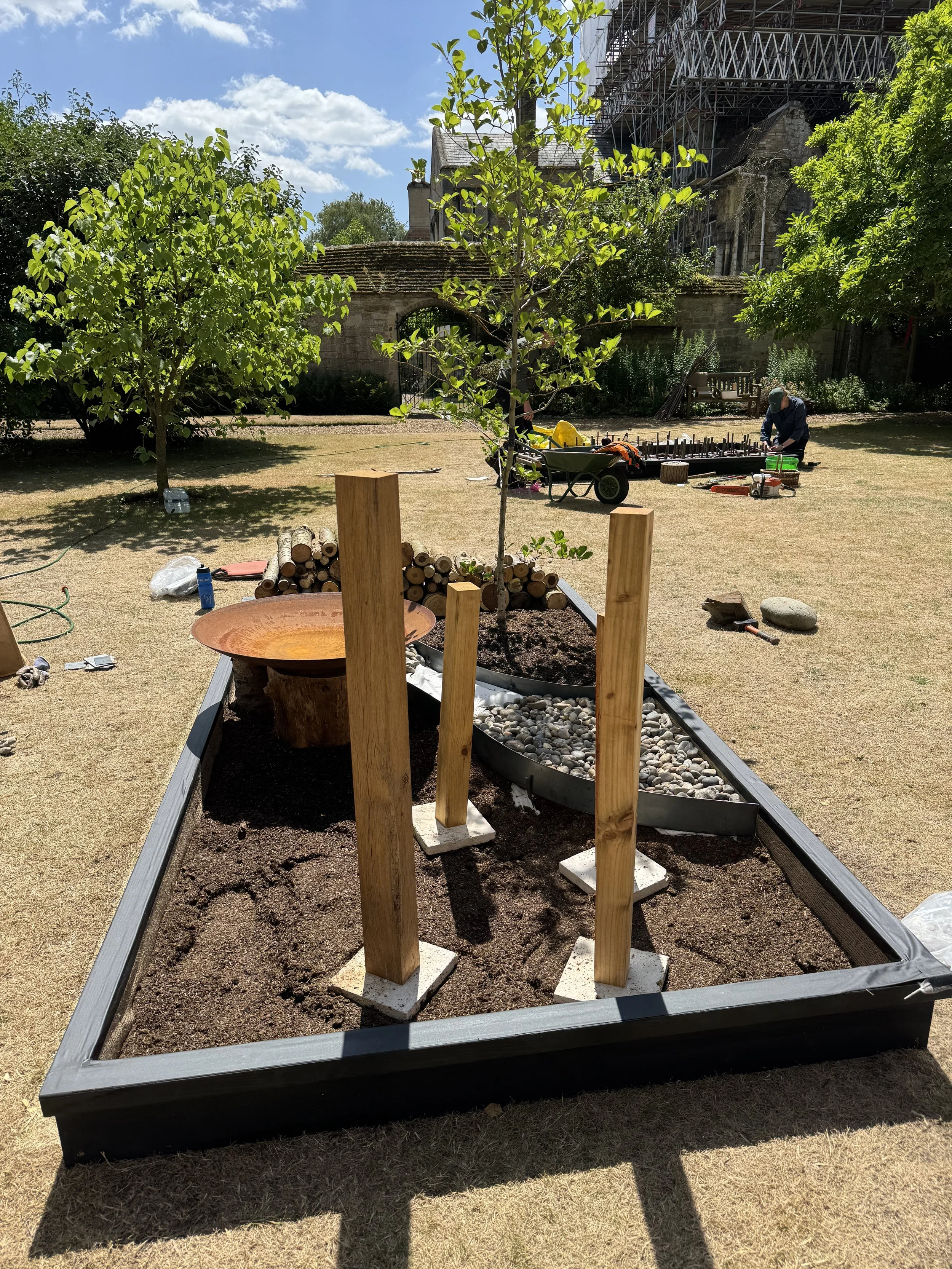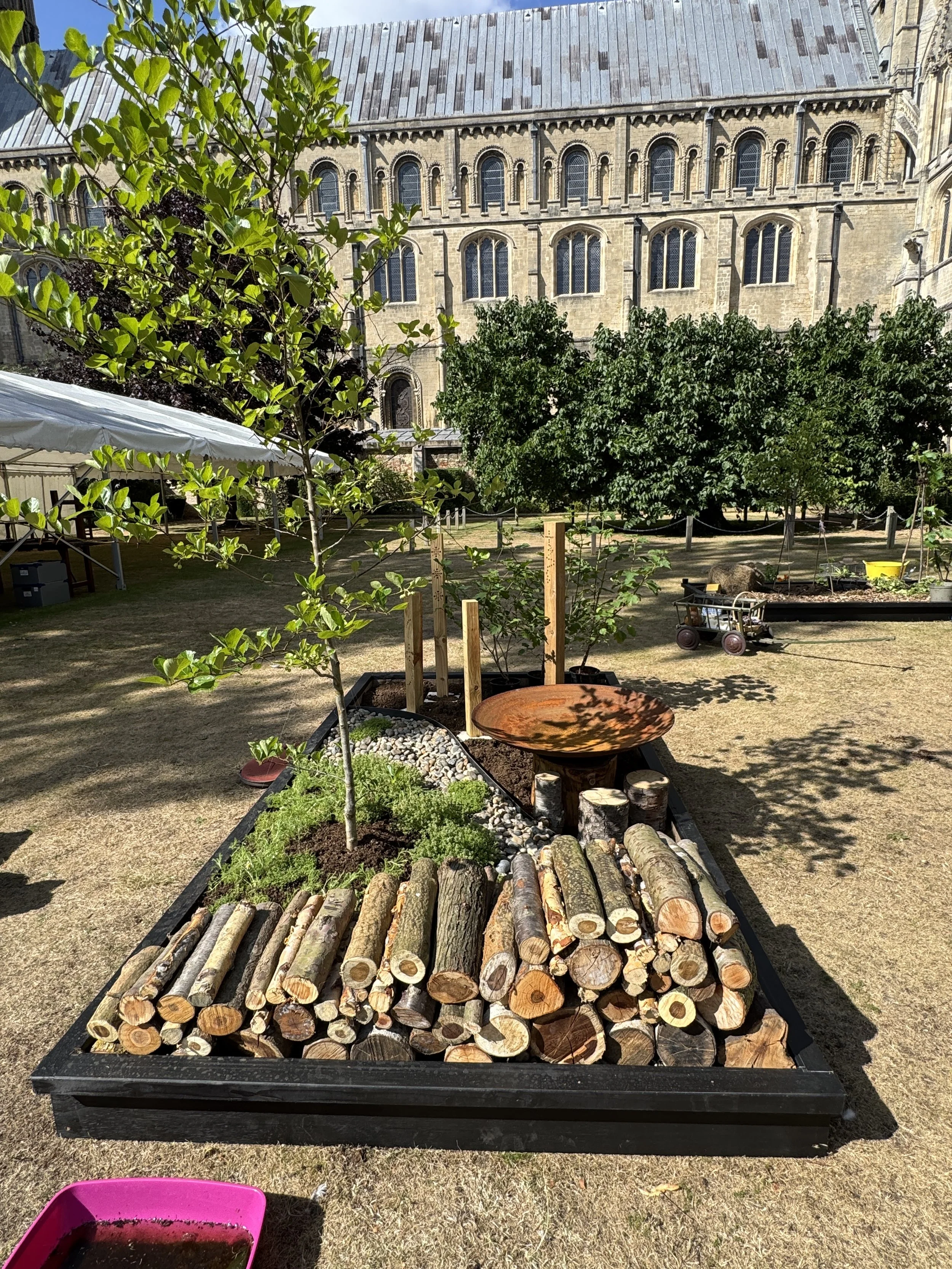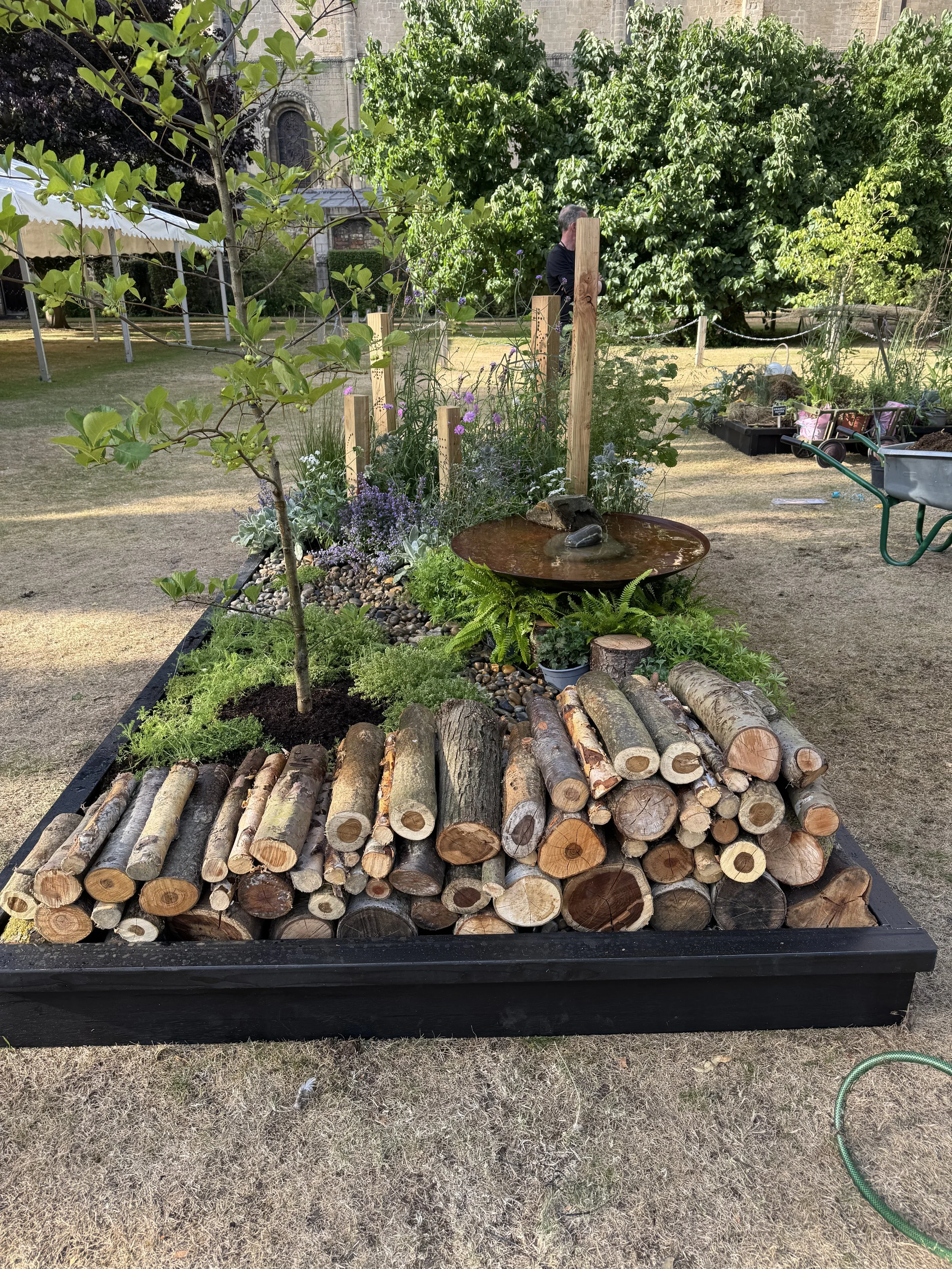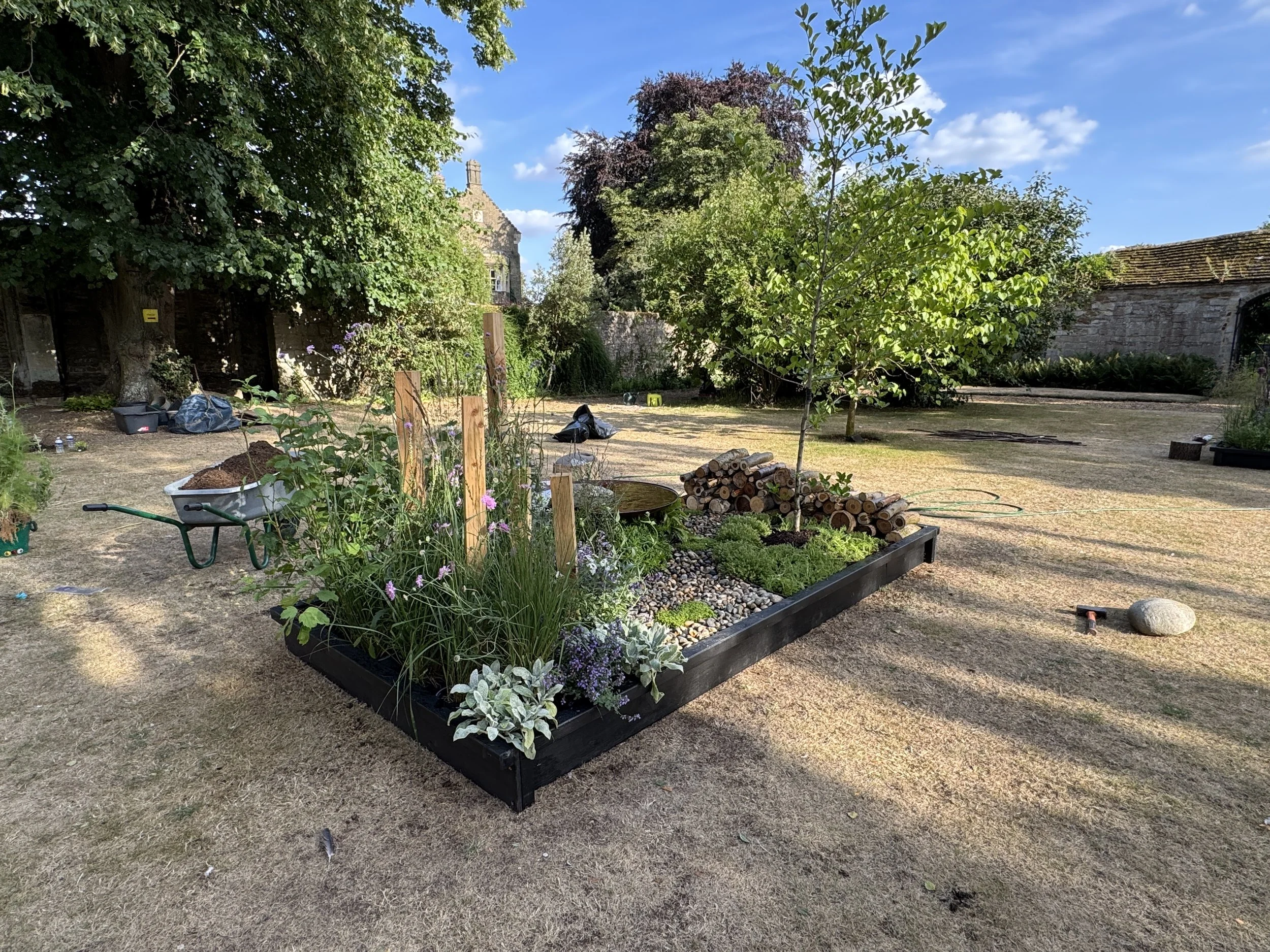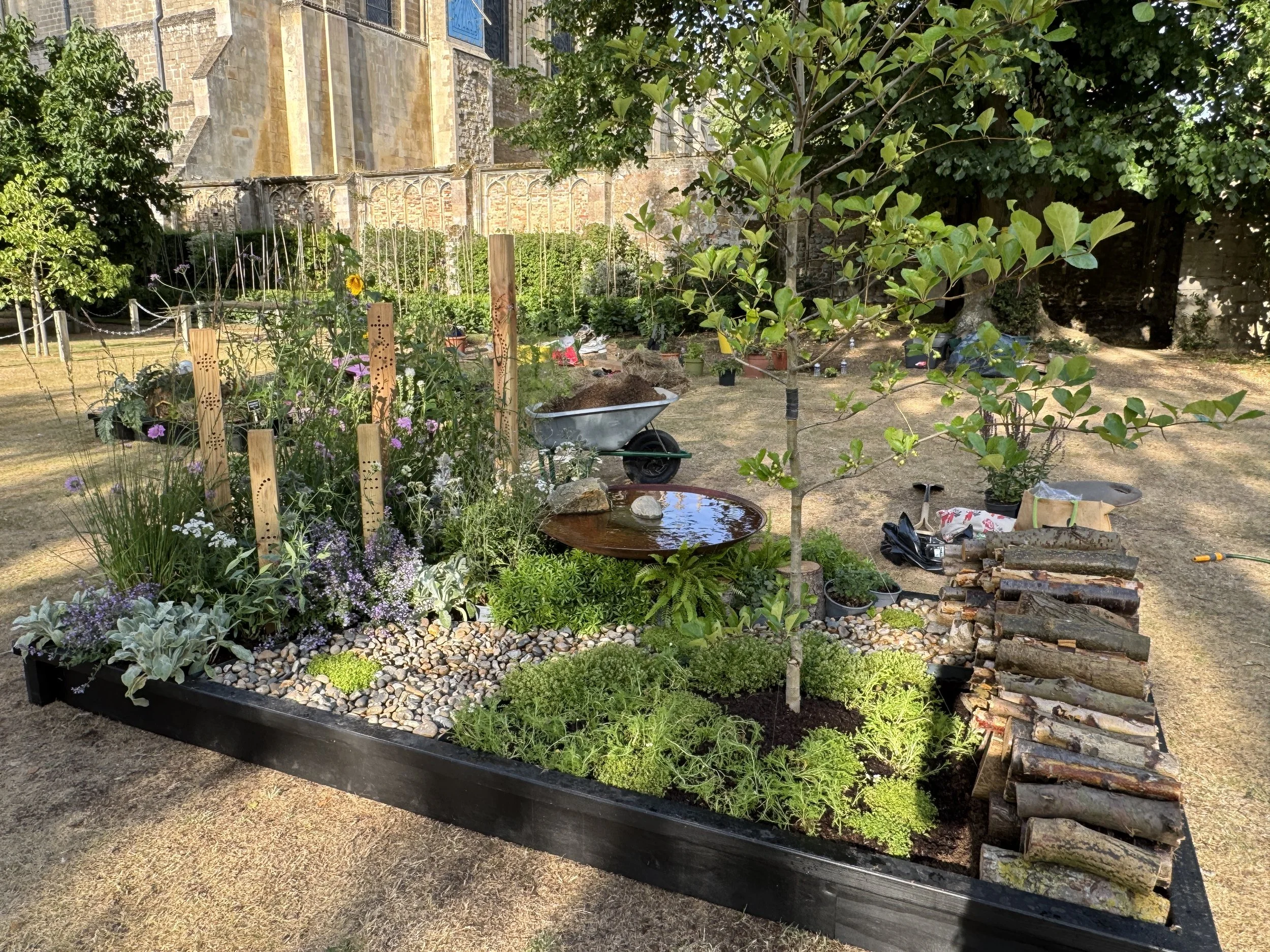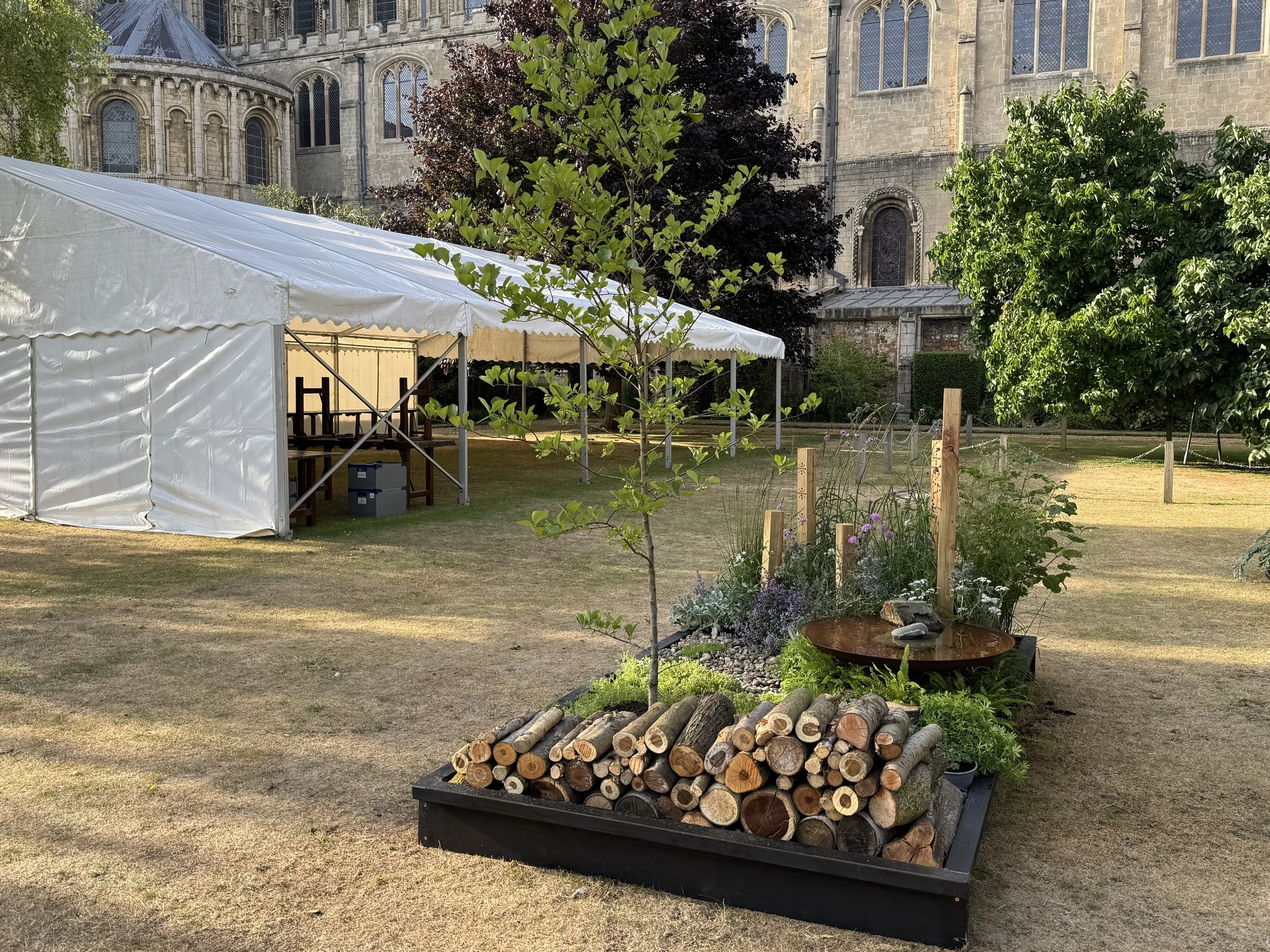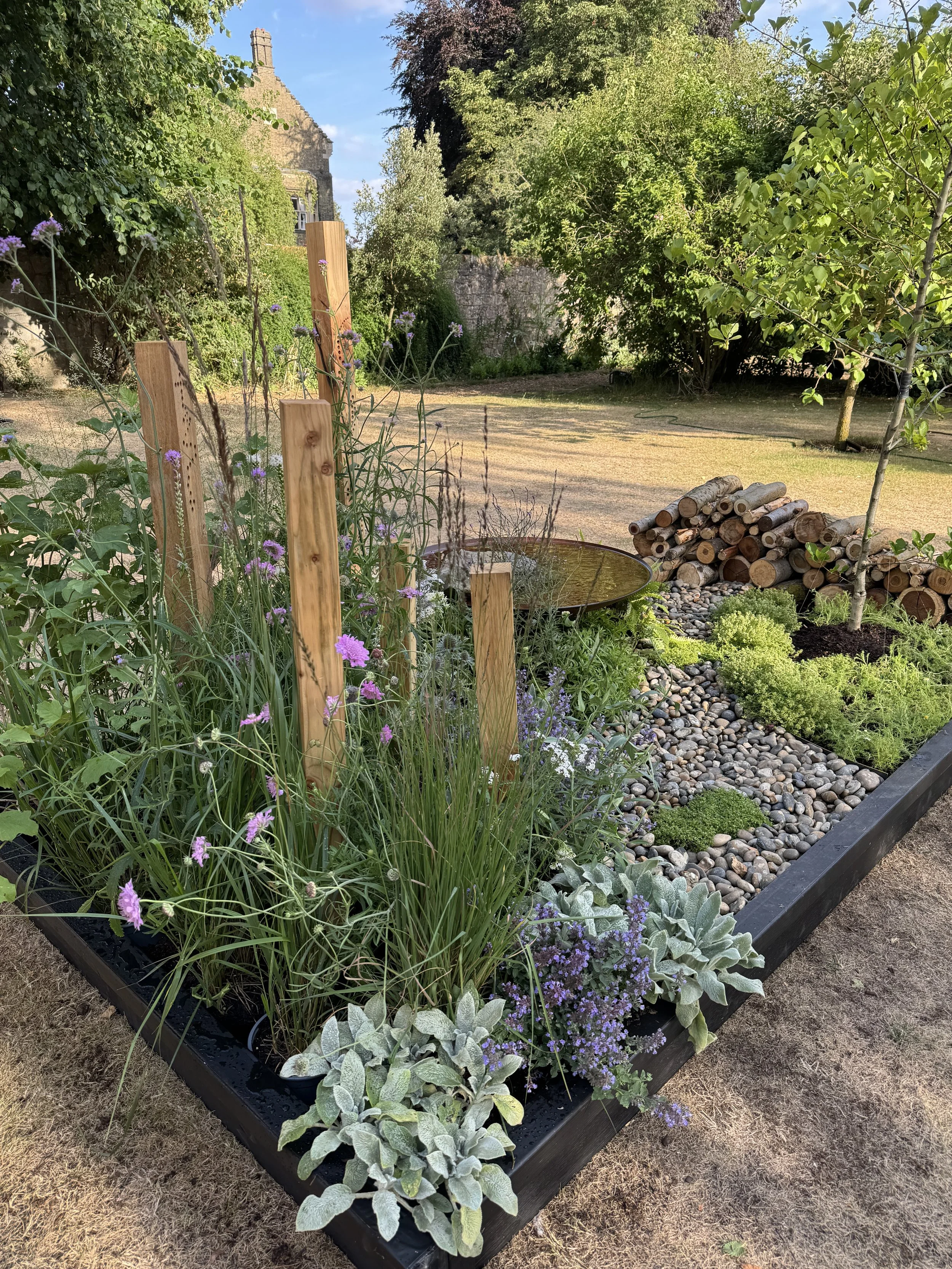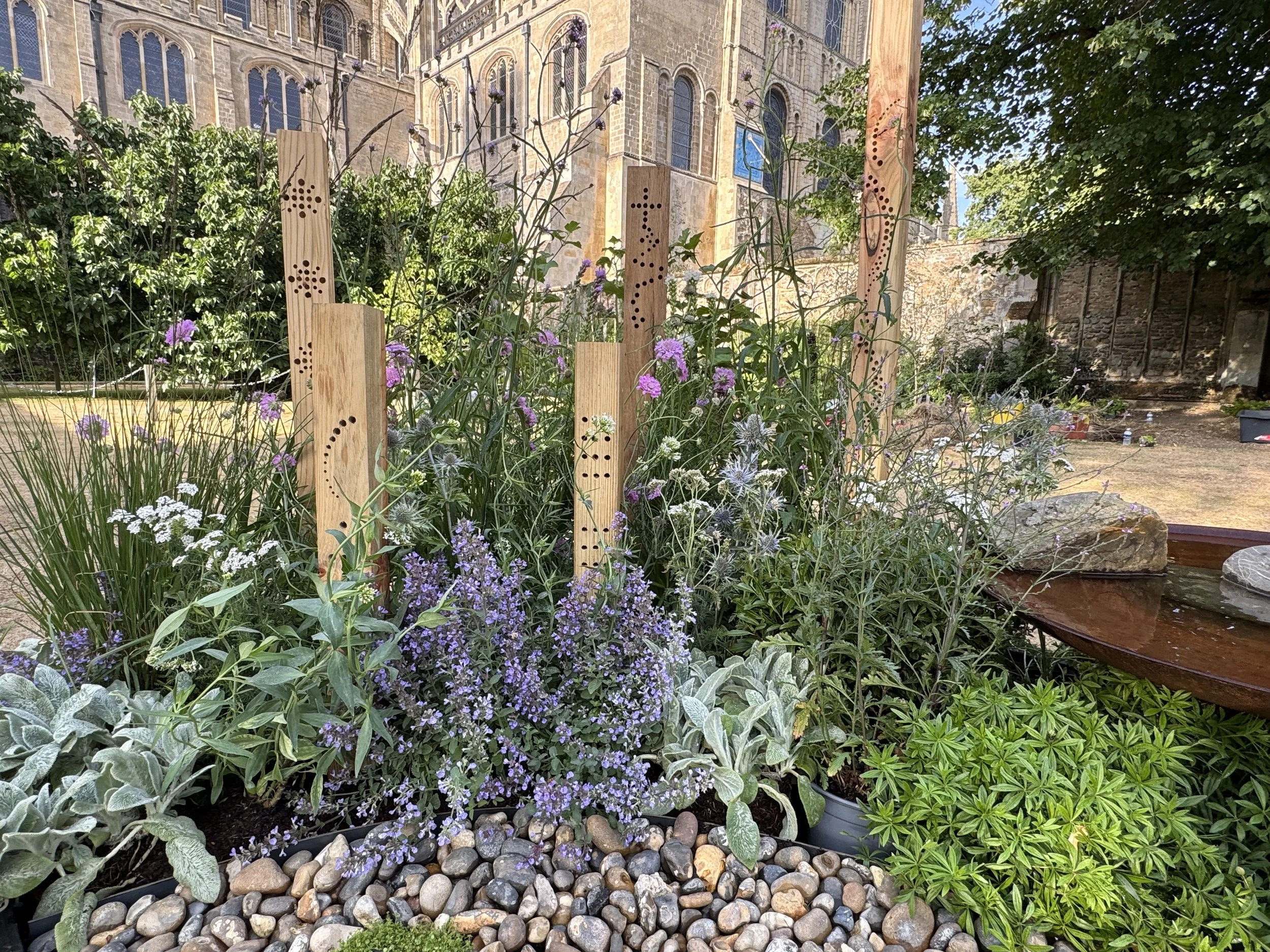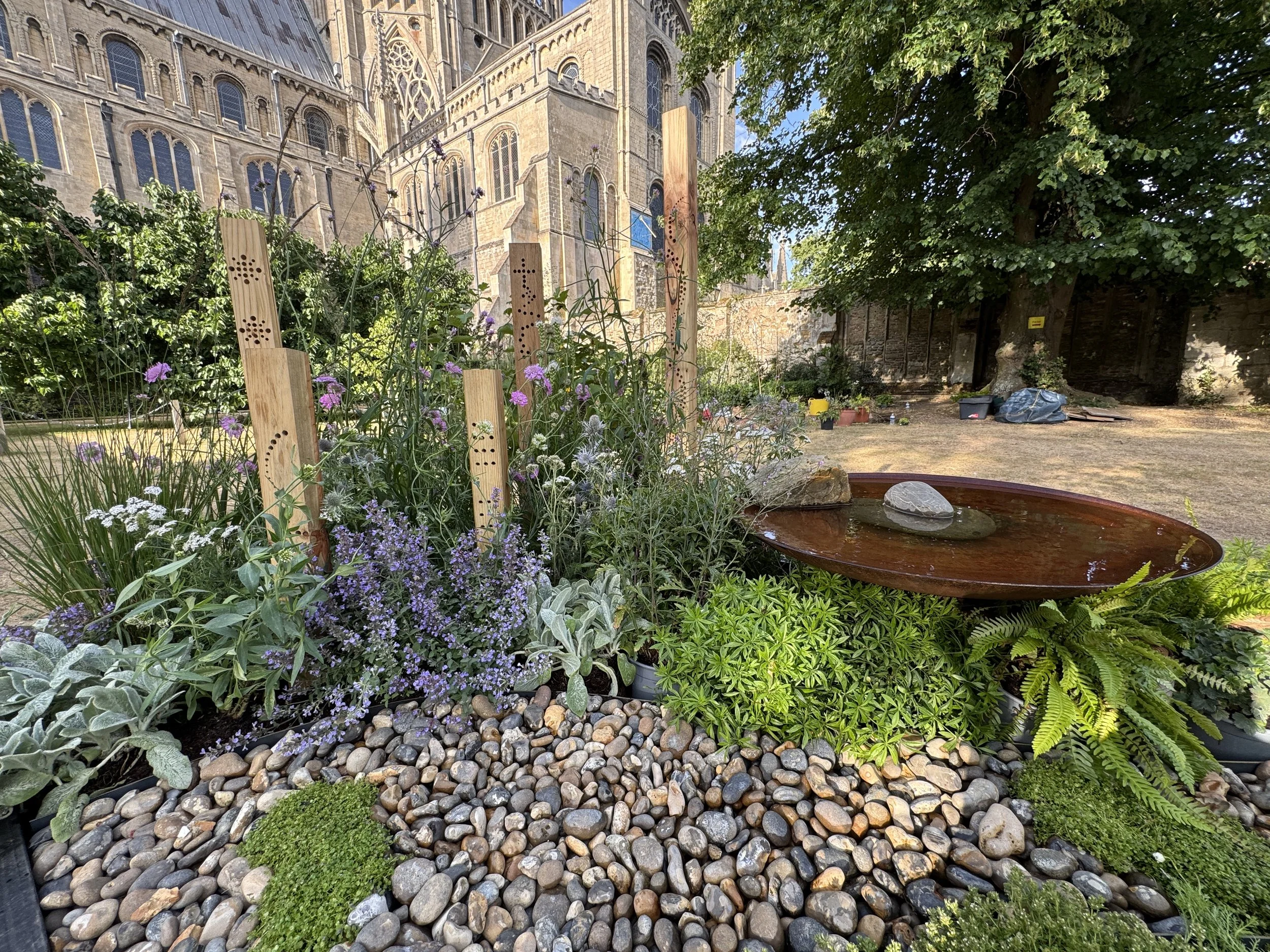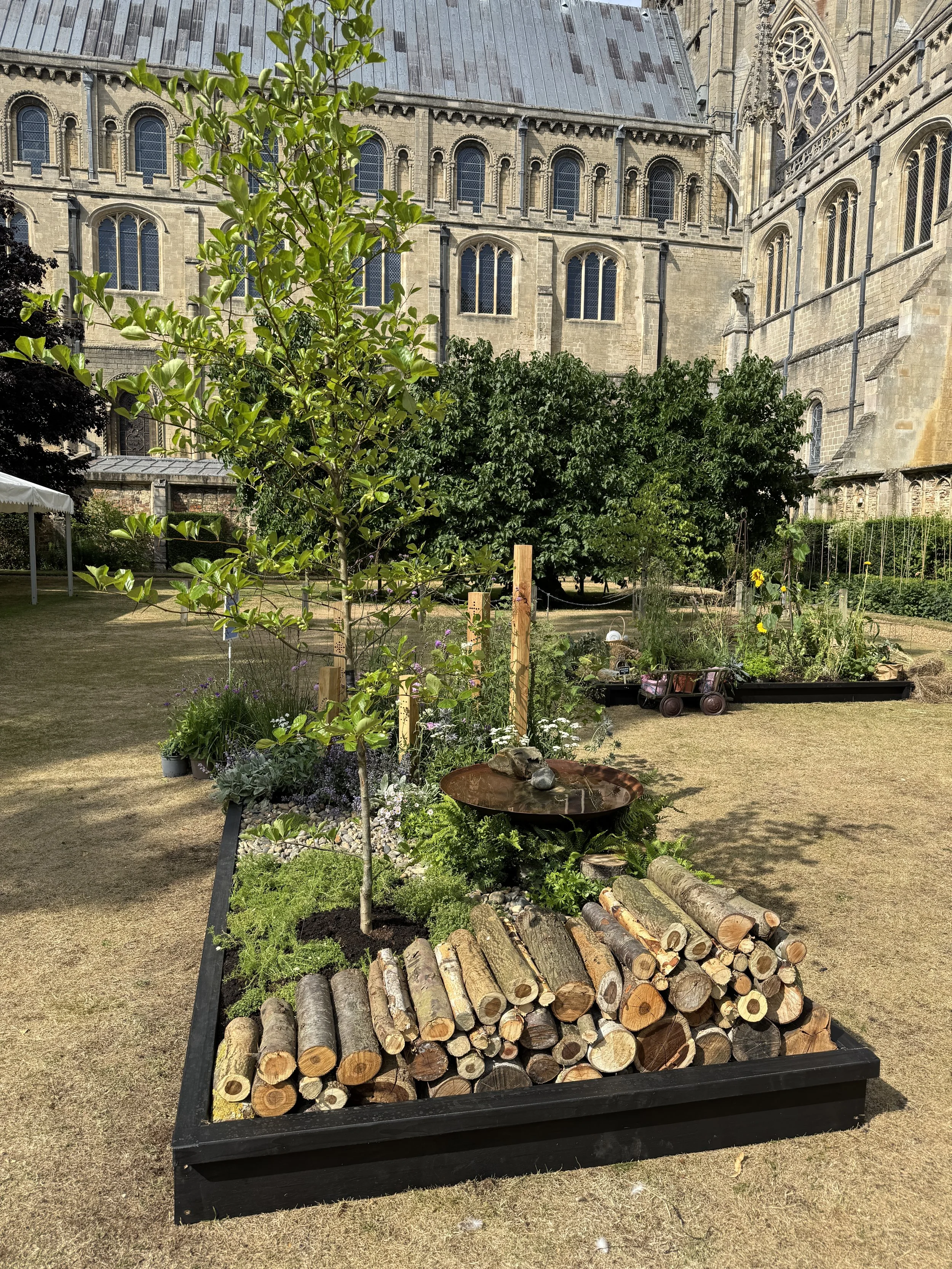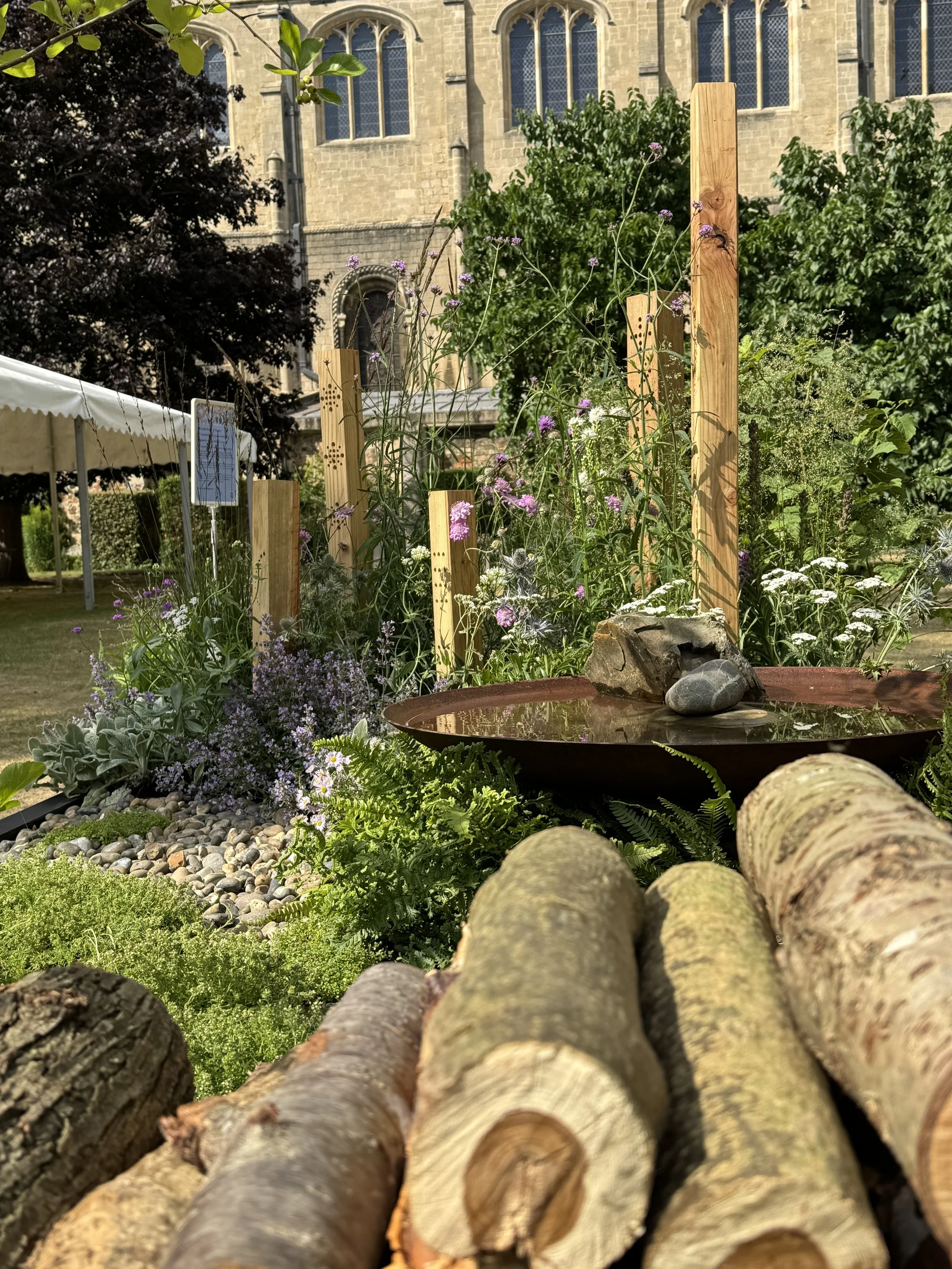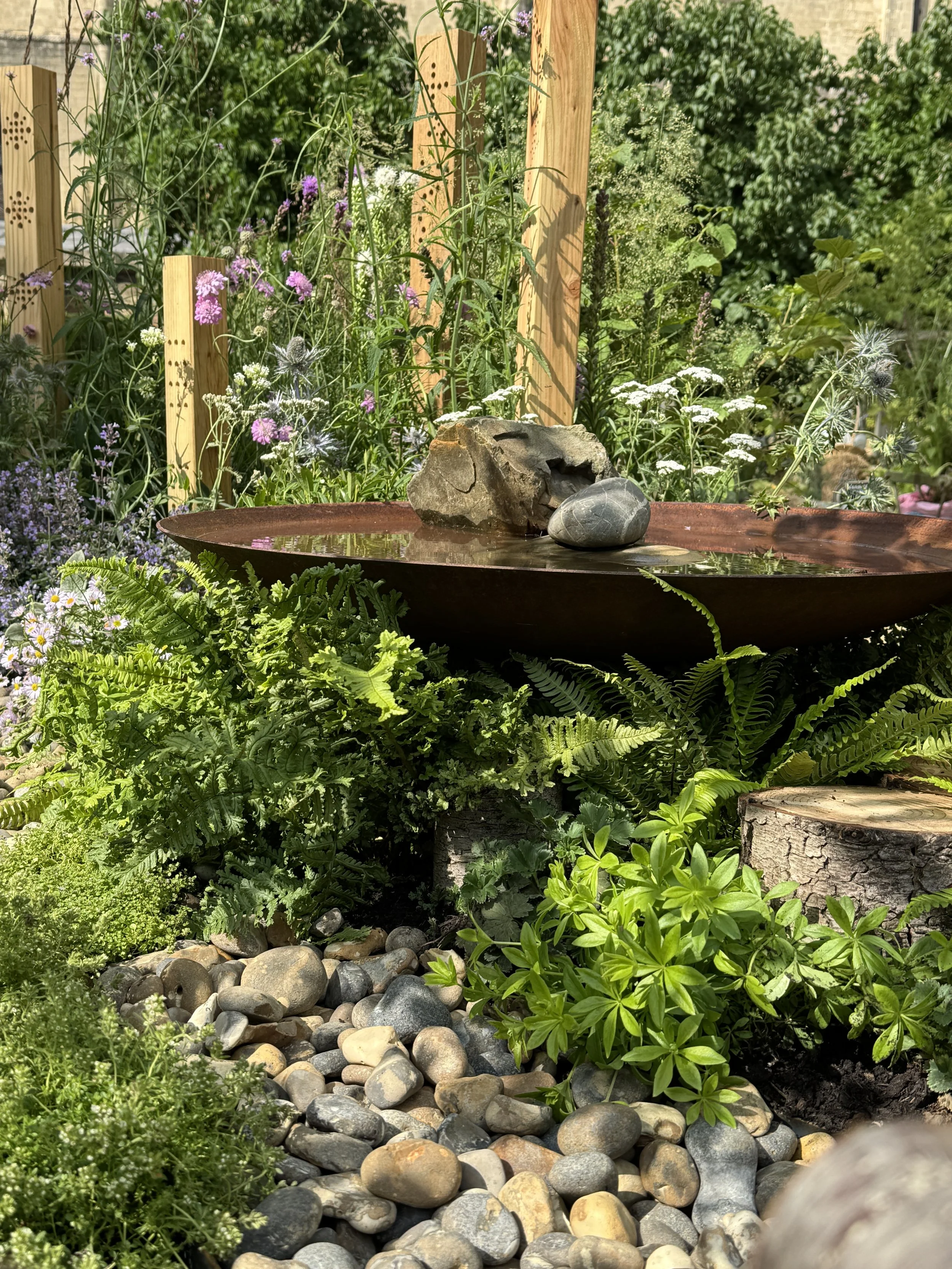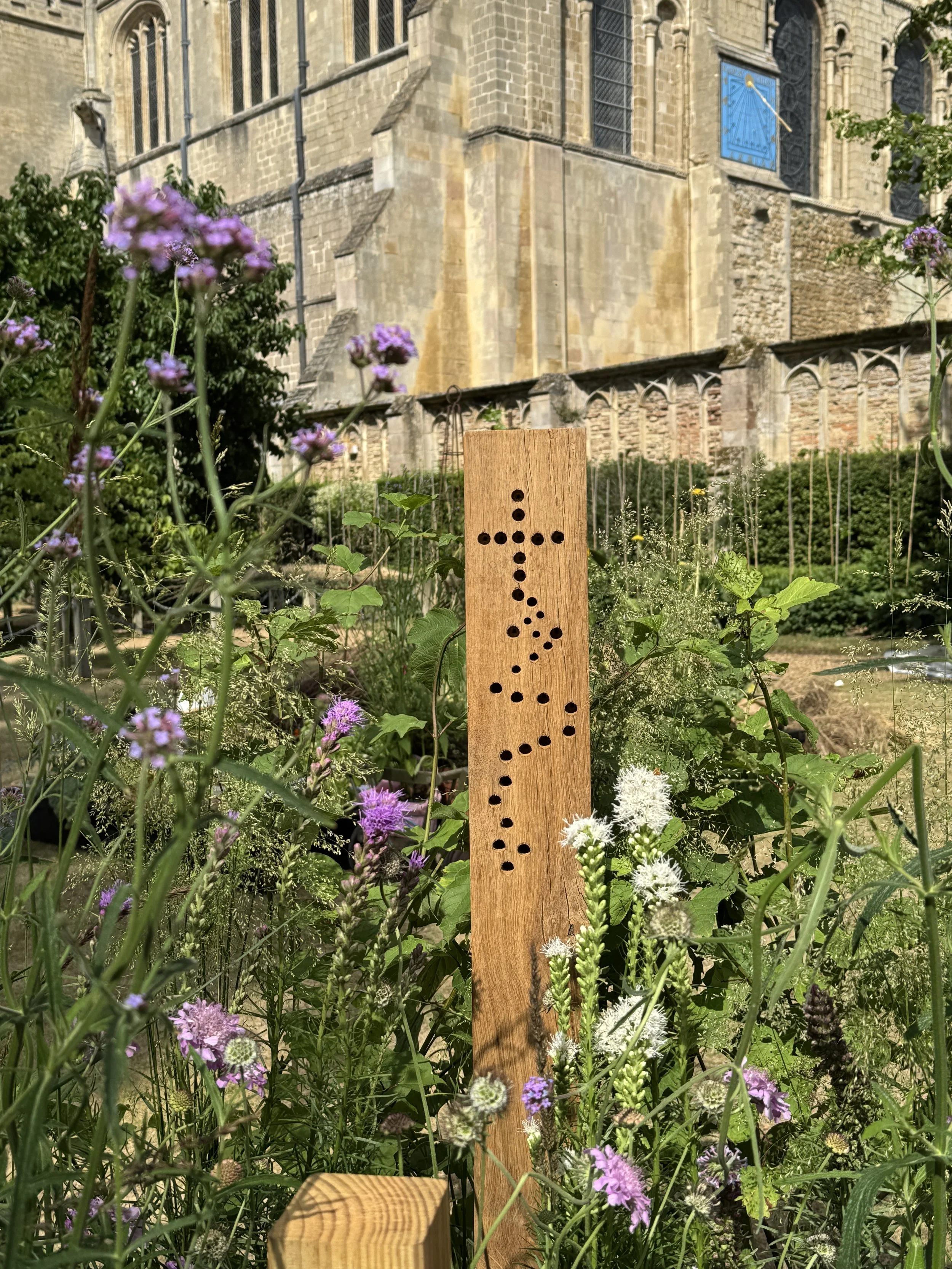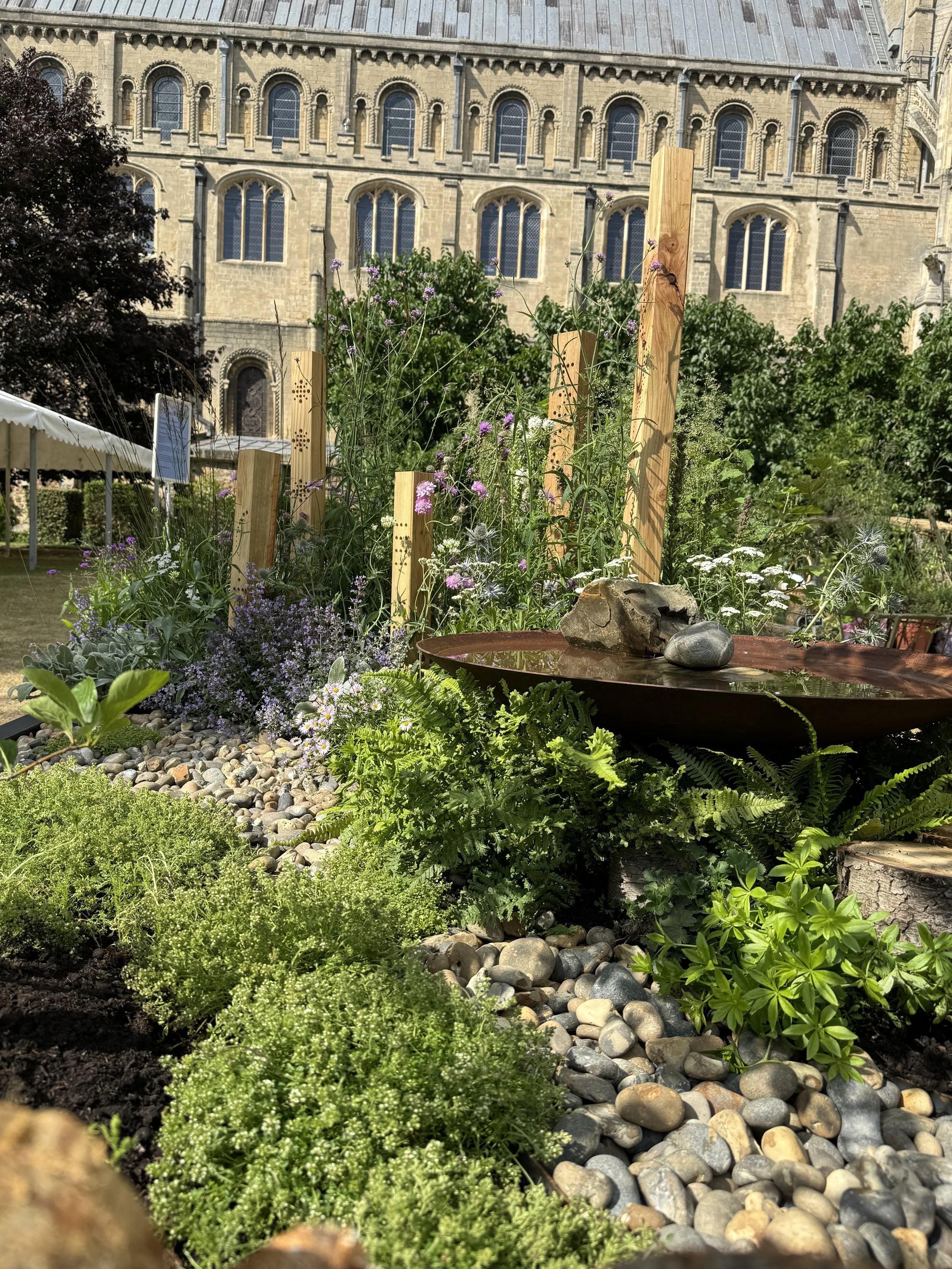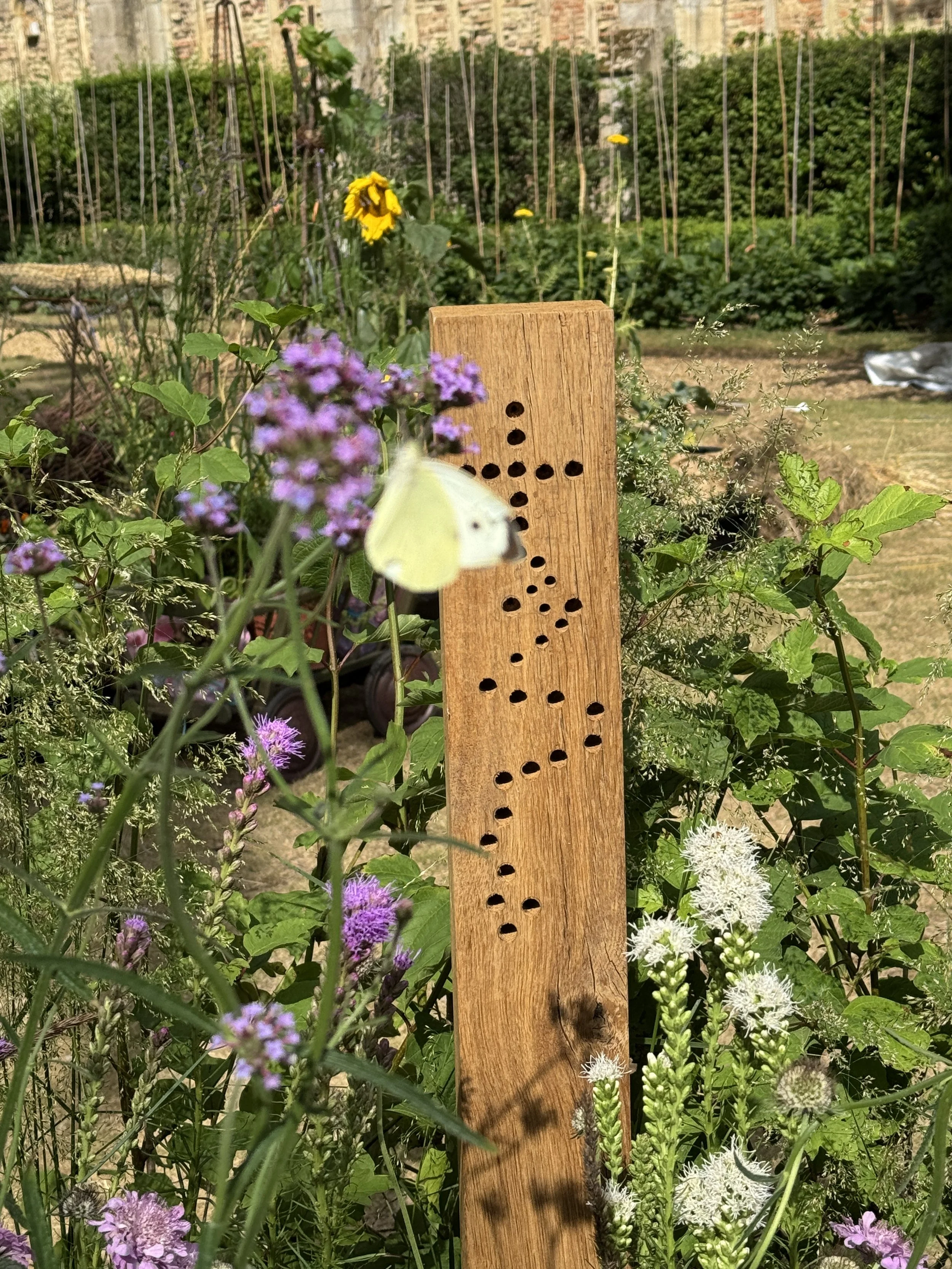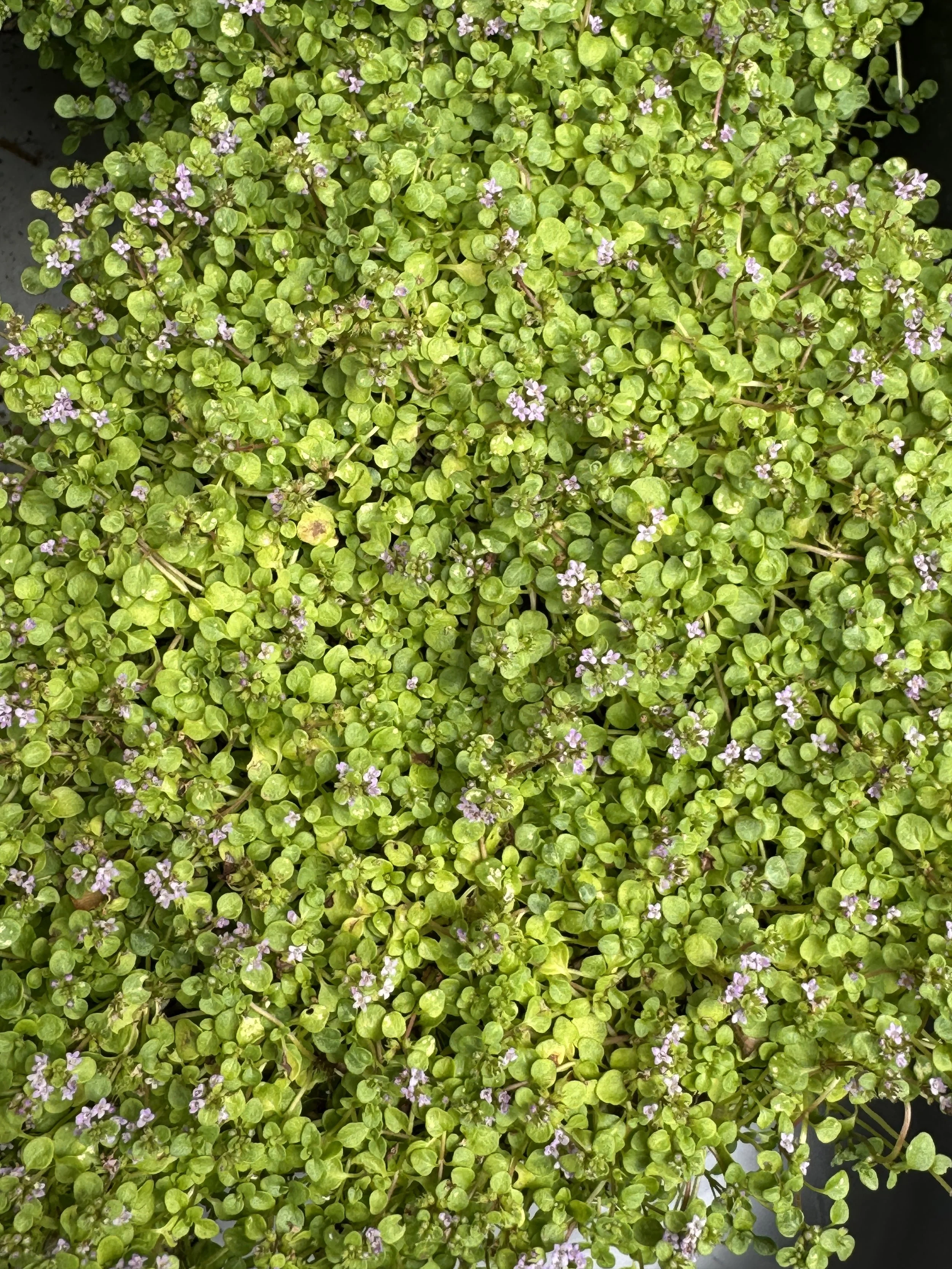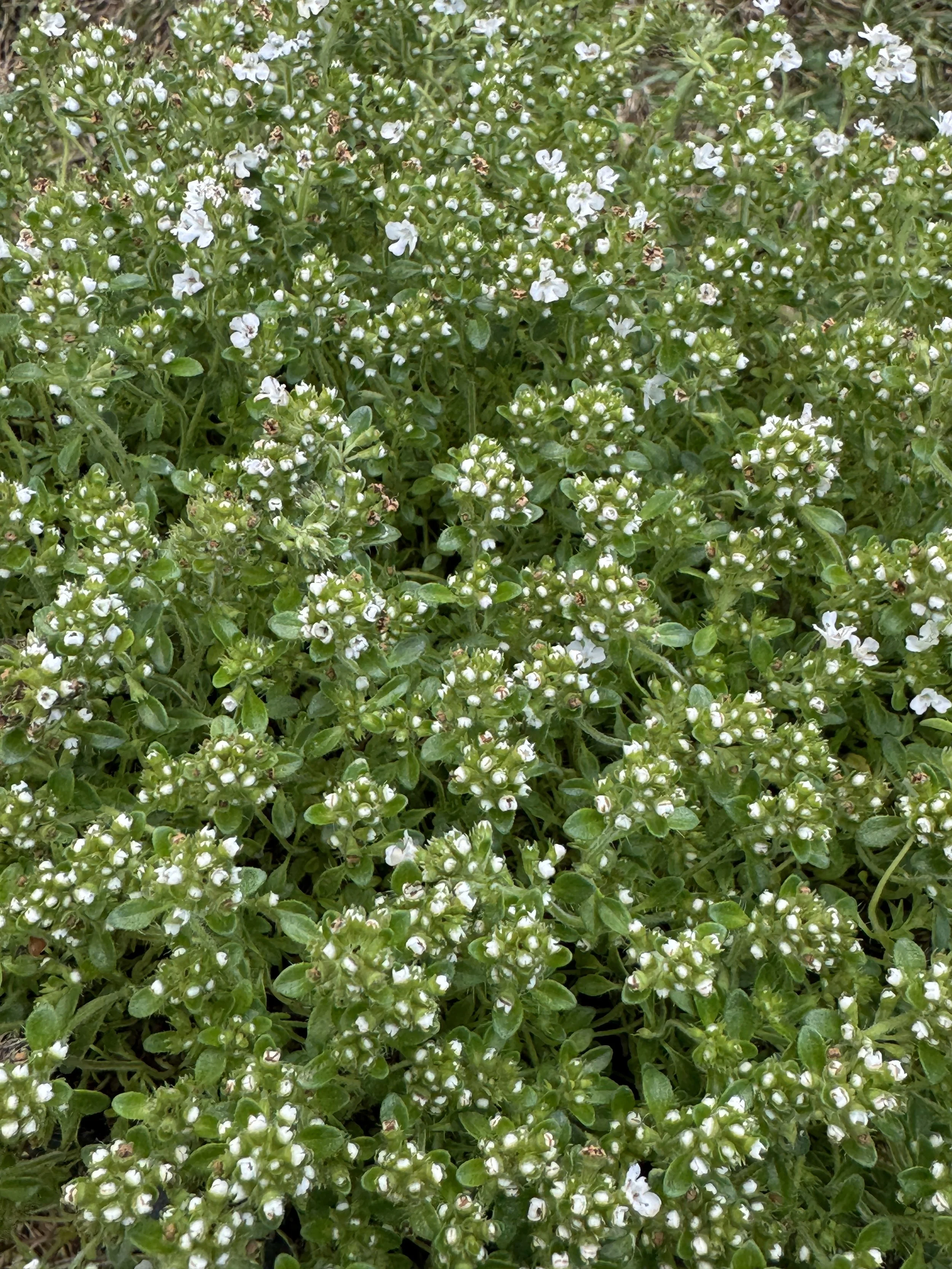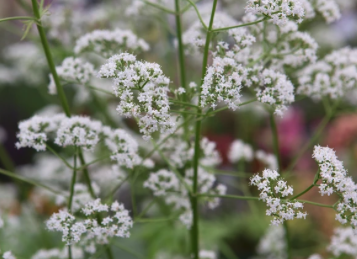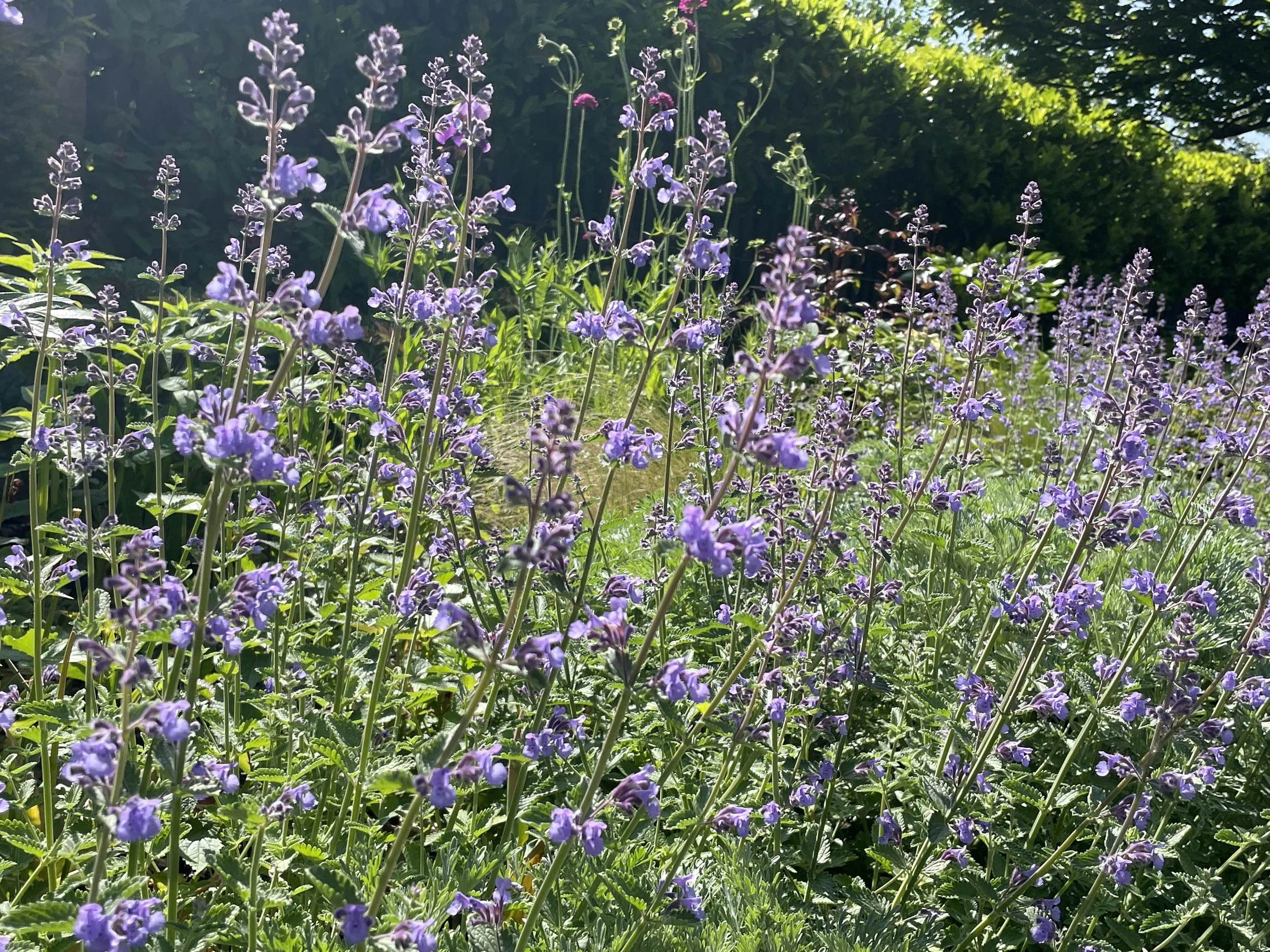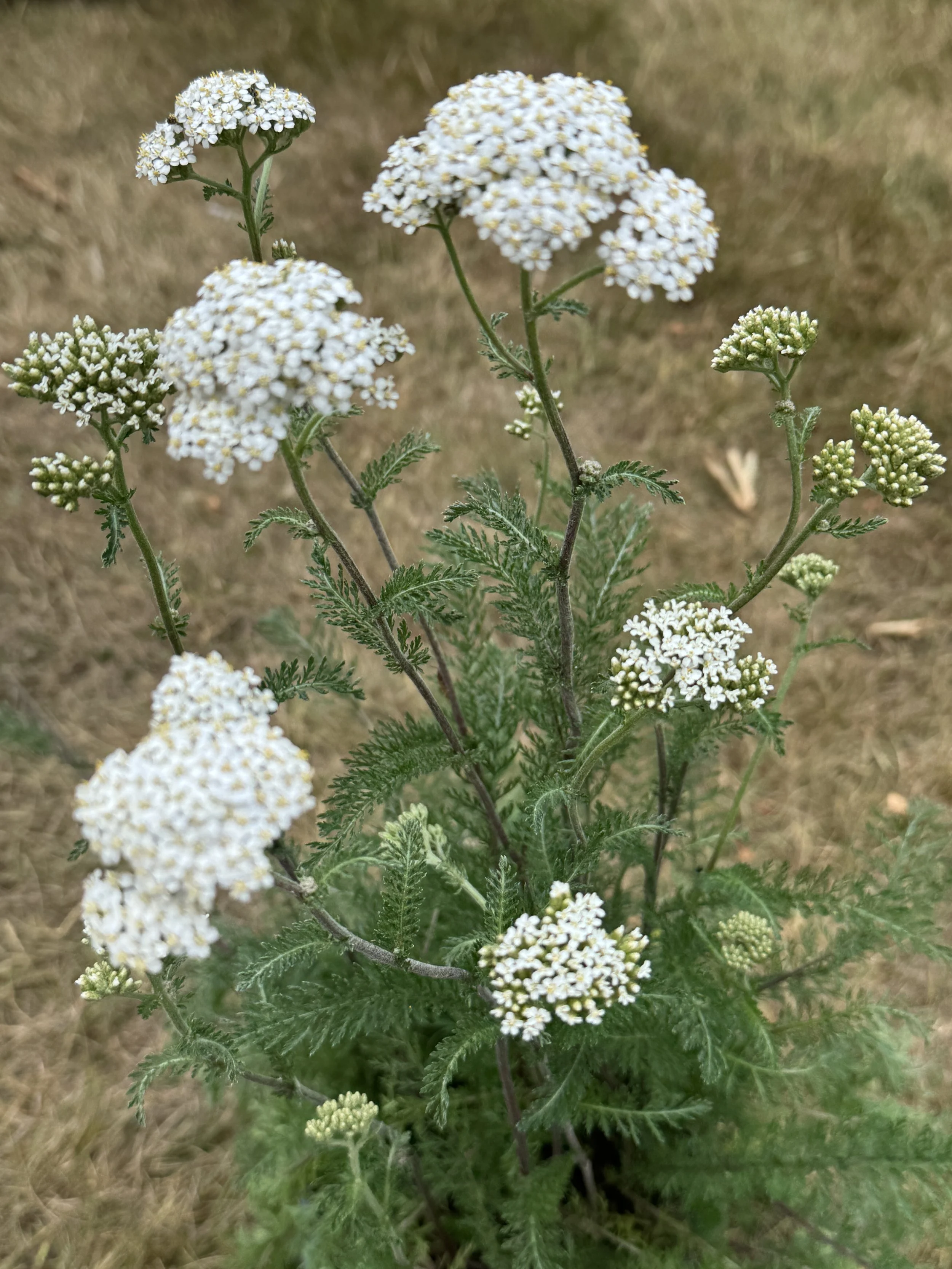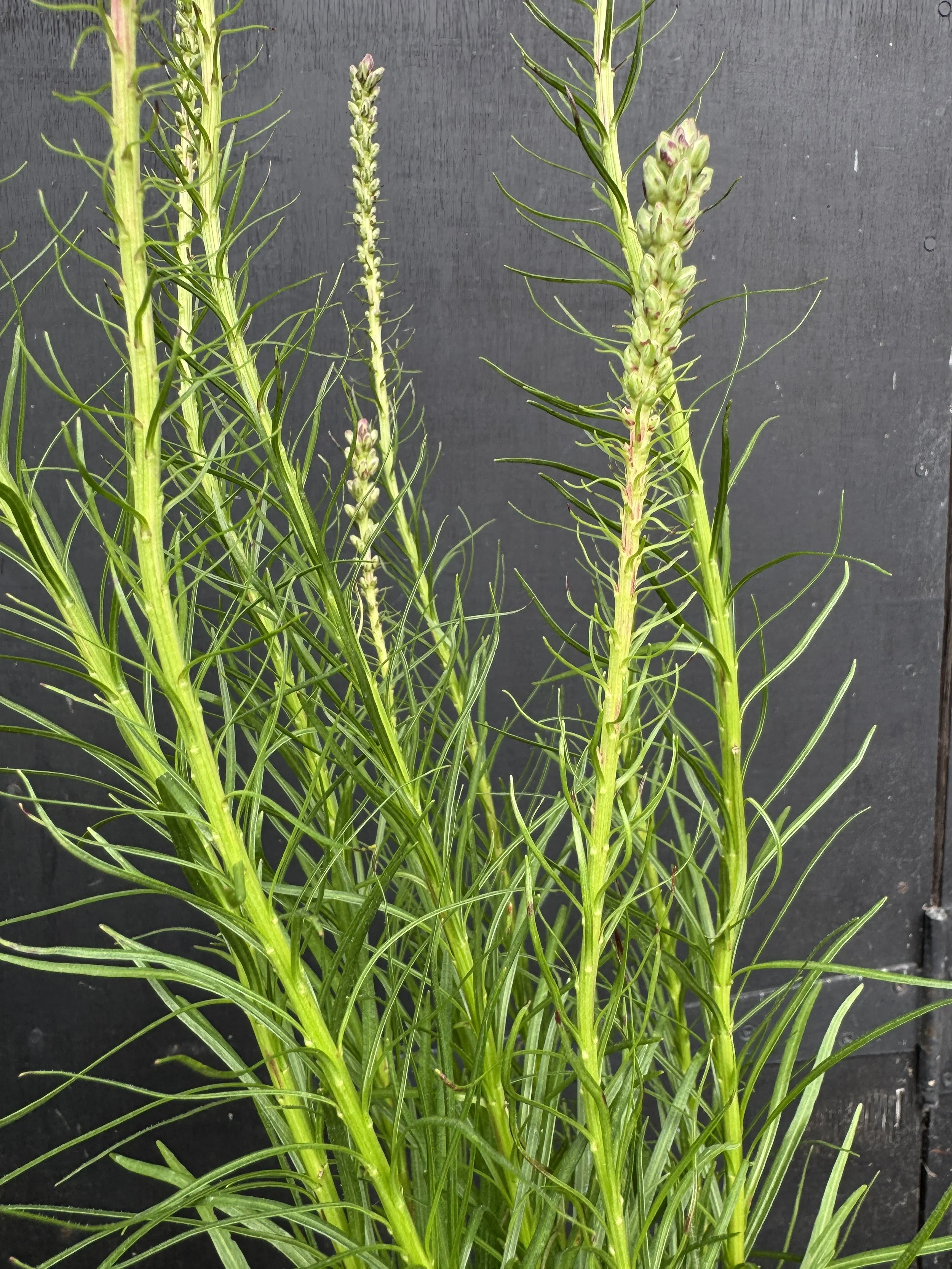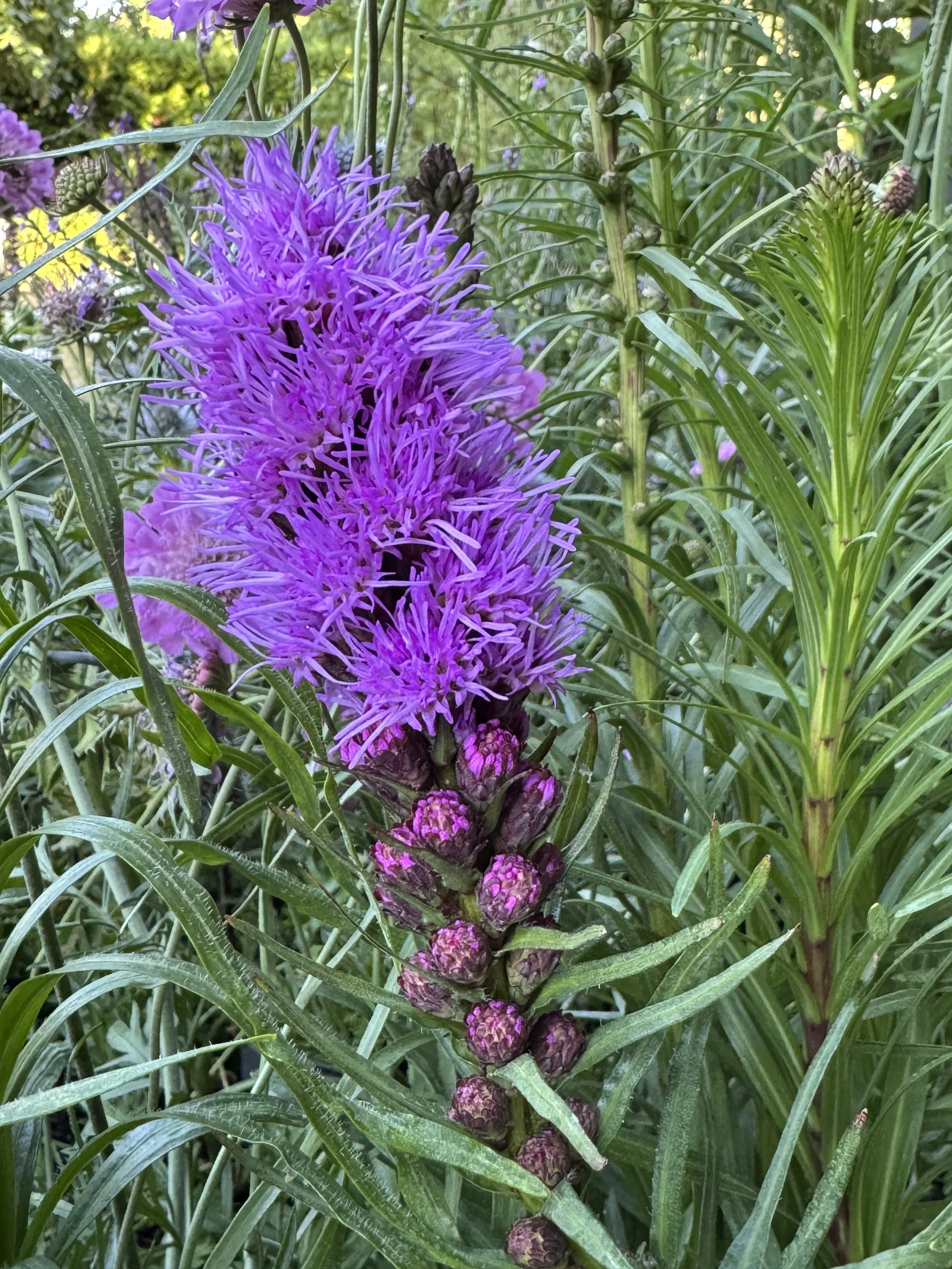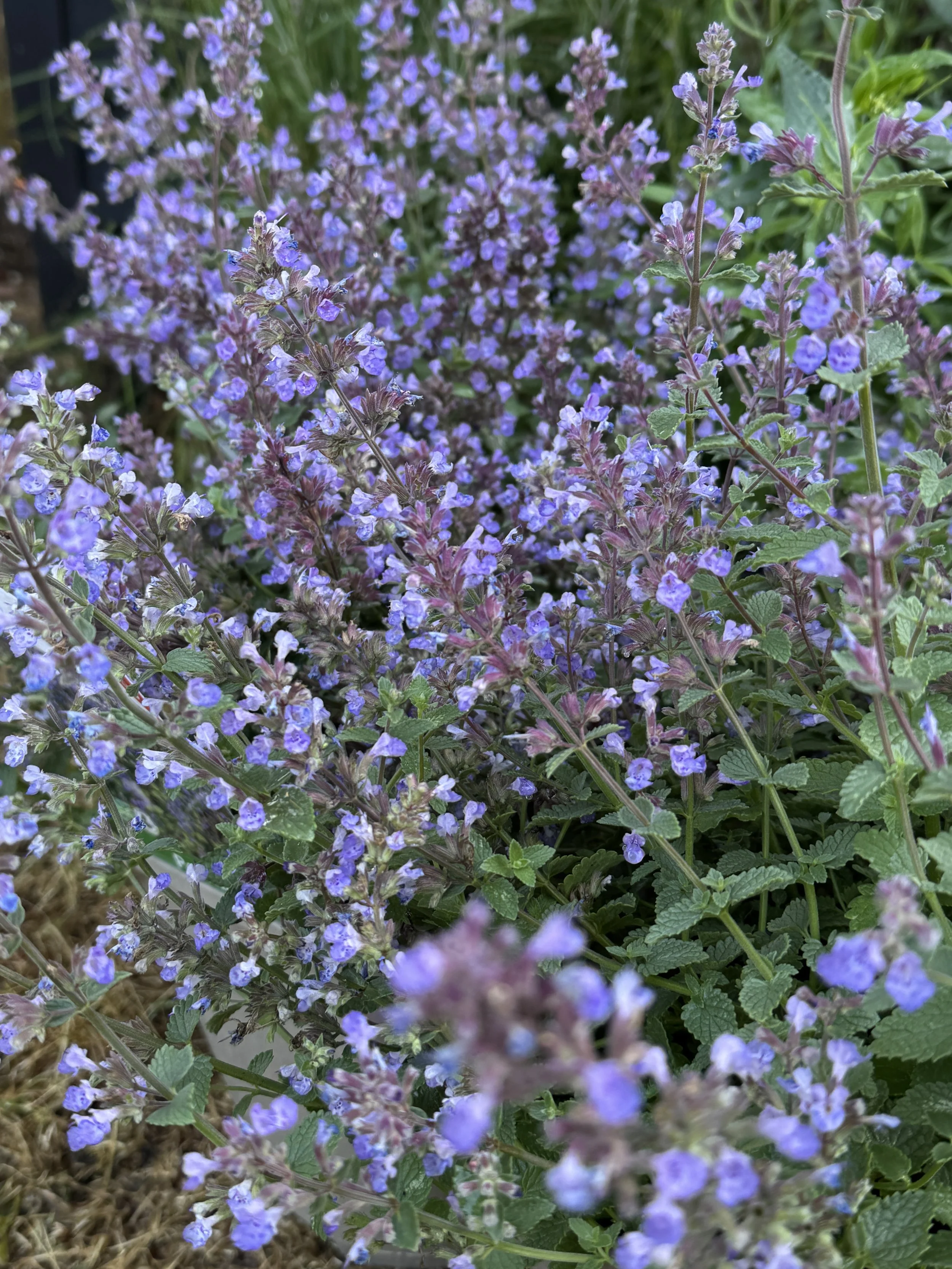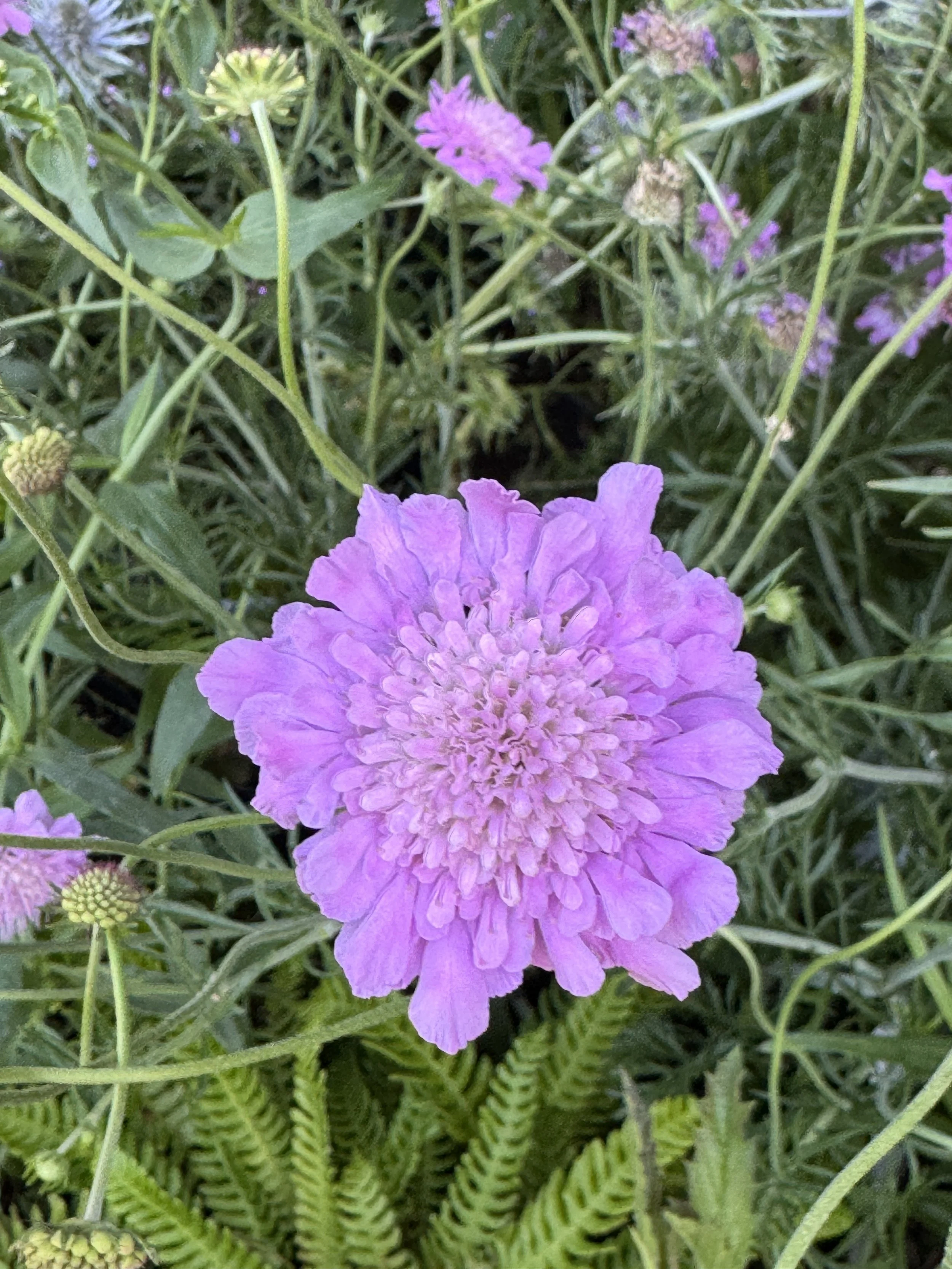Ely Cathedral Home & Garden Show
Design Rationale
“The Little Pocket of Nature”
The “Little Pocket of Nature” shows that even in a compact space you can bring in wildlife and create a calm and tranquil atmosphere to be enjoyed by all.
The garden is constructed using predominantly reclaimed materials helping to create a cozy natural space. Butterflies, bees and birds can enjoy nature’s produce so that everyone can see and hear wildlife in action.
Homes and habitats are created for other insects and invertebrates by stacking different varieties of logs in creative ways. Wooden posts drilled with holes placed within the planting create hideaways for solitary bees, and a pebble path allows more areas for insects to hide.
By bringing in a diverse variety of plants for all seasons, this “Little Pocket of Nature,” provides multiple, pollinating-insects with nectar-rich pollen flowers, leaves for caterpillars, and seed-heads for insects to overwinter in. All of the plants will encourage beneficial insects, such as hoverflies, ladybirds and lacewings as well as butterflies, moths and bees.
All species are true wildlife magnets; planting includes species such as Valerian officinalis, Verbena bonariensis, Verbena Bampton, Liatris spicata ‘Alba', Salvia ‘Caradonna’. Eryngium zabelii ‘Violetta’ is loved by pollinators, and the seed-heads can remain throughout the winter to provide food and habitats.
A large steel bowl brings in a source of water, allowing birds to wash any grubs from their feathers and to bathe or drink. It will also encourage frogs and toads. The large rocks or pebbles help wildlife get in and out easily. Bring in water and the wildlife will come.
Both the shrubs (Viburnum opulus) and the tree (Crataegus persimilis ‘Prunifolia’) are chosen for the individual ecosystems they provide to wildlife. Not only do they provide food and habitats for wildlife throughout the year they both have outstanding autumn colour as their leaves and berries turn scarlet red.
Finally the biodiverse lawn under the Crataegus, is formed of Corsican mint and Chamomile, not only does it have a beautiful fragrance, it’s ecologically beneficial, attracting more pollinators and provides habitats for insects. It is more drought tolerant and lower maintenance than a traditional lawn. A perfect solution for a more modest space.
Concept and Visuals
Images (1&2) courtesy of Keith Heppell photography
The Little Pocket of Nature (Pictures from the show)
Planting Palette
Final Plant List: Scabious ‘Kudo Pink’, Nepeta fassenii ‘Purrsian Blue’, Liatris spicata ‘Kobold’, Liatris spicata ‘Alba’, Gallium odoratum, Dryopteris affinis Cristata, Erigeron ‘Lavender Lady’, Thymus praecox ‘Albiflorus’, Chamomile Roman, Calamagrostis ‘Karl Foerster’, Deschampsia cespitosa ‘Goldtau’, Molinia ‘Edith Dudszuz’, Verbena bonariensis, Stachys ‘Silver Carpet’, Centranthus ‘Alba’, Eryngium zab. ‘Violetta’, Achillea ‘White Beauty’, Alchemilla erythropoda, Prunus lauceracus ‘Sofia’, Crataegus persimilis ‘Prunifolia’, Viburnum opulus



